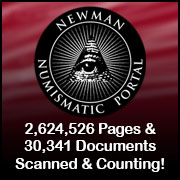
About UsThe Numismatic Bibliomania Society is a non-profit association devoted to the study and enjoyment of numismatic literature. For more information please see our web site at coinbooks.org SubscriptionsThose wishing to become new E-Sylum subscribers (or wishing to Unsubscribe) can go to the following web page link MembershipThere is a membership application available on the web site Membership Application To join, print the application and return it with your check to the address printed on the application. Print/Digital membership is $40 to addresses in the U.S., and $60 elsewhere. A digital-only membership is available for $25. For those without web access, write to: Charles Heck, Treasurer AsylumFor Asylum mailing address changes and other membership questions, contact Chuck at this email address: treasurer@coinbooks.org SubmissionsTo submit items for publication in The E-Sylum, write to the Editor at this address: whomren@gmail.com
BUY THE BOOK BEFORE THE COIN |
- WAYNE'S WORDS: THE E-SYLUM JUNE 28, 2020
- NBS VOTING, AUCTION, SUBMISSION REMINDERS
- KENNY SAMMUT OFFERS NUMISMATIC LITERATURE
- PHILIPPINE SPECIAL EDITION REDBOOK SOLD OUT
- NEW BOOK: THE MONEY PLOT
- NEW BOOK: SMALL CHANGE
- BOOK REVIEW: U.S. CLASSIC GOLD COINS OF 1834-1839
- MORE ON COIN COLLECTING ALBUMS, VOLUME THREE
- FIRST EDITION FANTASTIC 1804 DOLLAR CENSUS UPDATE
- NEWMAN PORTAL ADDS DAVISSONS SALE CATALOGS
- VIDEO: UNITRADE PRESIDENT IRAJ SAYAH
- CORONAVIRUS UPDATES: JUNE 28, 2020
- NOTES FROM E-SYLUM READERS: JUNE 28, 2020
- CHUCK MAYER OF CHUCK'S COIN CORNER
- NUMISMATIC COLLECTORS GUILD SILVER DOLLAR SETS
- VOCABULARY TERM: MELTING
- EDWIN JAMES HARDY PAULEY (1873-1934)
- STEPHEN ALBUM RARE COINS AUCTION 37 RESULTS
- ARCHIVES INTERNATIONAL AUCTION 60
- NUMISMATIC NUGGETS: JUNE 28, 2020
- CHARON'S OBOLS FOUND IN CHILDREN'S GRAVES
- PLANTERS BANK COUNTERMARK FOUND AT BATTLE SITE
- THE CALDWELL LORD'S PRAYER CIVIL WAR TOKEN
- HOWARD HUGHES MEDALS OFFERED
- 2021 BULLION COIN REVERSE DESIGNS RECOMMENDED
- SRI LANKA BANKNOTE PRINTING REPORT PUBLISHED
- POLYMER BANKNOTE FORGER CAPTURED IN ROMANIA
- AAS OPENS NEW BOOK CONSERVATION LAB SPACE
- BOOKS IN AN AGE OF TWEETS
- CARNEGIE LIBRARY RARE BOOK THEFT SENTENCES
- COIN INDUSTRY LETTERS SUPPORT TOM NOE
- LOOSE CHANGE: JUNE 28, 2020
- FEATURED WEB SITE: COINS OF PANAMA
Click here to access the complete archive
Click here to unsubscribe (scroll down)
To comment or submit articles, reply to whomren@gmail.com
Content presented in The E-Sylum is not necessarily researched or independently fact-checked, and views expressed do not necessarily represent those of the Numismatic Bibliomania Society.
WAYNE'S WORDS: THE E-SYLUM JUNE 28, 2020
 New subscribers this week include:
John Baumgart, courtesy of Len Augsburger,
Graham Byfield and Robert Parkinson of Sovereign Rarities Ltd, courtesy of Steve Hill;
Brent Flanik, and
Clemente Juarez.
Welcome aboard! We now have 6,113 subscribers.
New subscribers this week include:
John Baumgart, courtesy of Len Augsburger,
Graham Byfield and Robert Parkinson of Sovereign Rarities Ltd, courtesy of Steve Hill;
Brent Flanik, and
Clemente Juarez.
Welcome aboard! We now have 6,113 subscribers.
Thank you for reading The E-Sylum. If you enjoy it, please send me the email addresses of friends you think may enjoy it as well and I'll send them a subscription (but let me know if they are located in the European Union). Contact me at whomren@gmail.com anytime regarding your subscription, or questions, comments or suggestions about our content.
This week we open with some reminders for NBS members, a numismatic literature sale, three new books, one review and more. Welcome to new advertiser Gary Groll - click on his ad and explore his web site.
Other topics this week include UNITRADE, Chuck's Coin Corner, the Numismatic Collectors Guild, auction sales, Charon's Obols, the Planter's Bank countermark, Howard Hughes and Annie Oakley's medals, 2021 bullion coin reverse designs, dealer Tom Noe and the coins of Panama.
To learn more about the Manila Mint, Classic Gold quarter eagles and half eagles, The Fantastic 1804 Dollar, rare coin supply chains, Tenino wooden dollar number 1, relic items, Nova Scotia money broker Edwin J. H. Pauley, Annam Études Numismatiques, whaling vignettes, how they played "heads or tails" in ancient Rome, read on. Have a great week, everyone!
Wayne Homren
Editor, The E-Sylum
NBS VOTING, AUCTION, SUBMISSION REMINDERS
Here's a trio of Numismatic Bibliomania Society announcements and reminders courtesy of Asylum Editor Maria Fanning. Thanks. While The Asylum is for NBS member only, the Summer 2020 issue has been made available to all - see below. -Editor
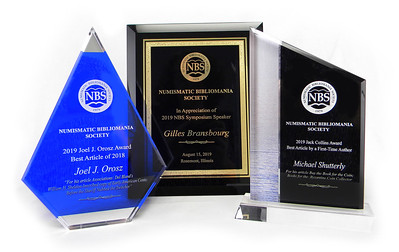
There is still time to vote for the The Asylum Awards: the Jack Collins Award for Best First-Time Author in 2019 and the Joel J. Orosz Award for Best Article in 2019. Download the ballot PDF and mail it or vote online by June 30, 2020.
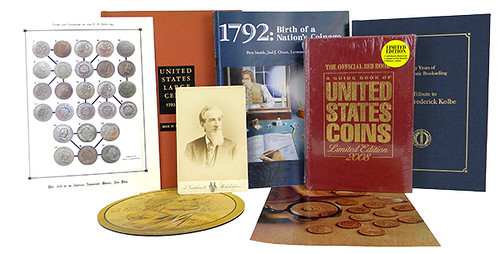
Sadly, this year's ANA World's Fair of Money has been cancelled but we will still be doing the auction via mail bid. All items sold are donated to the NBS by members and 100% of the proceeds go to the NBS treasury. Please check The E-Sylum for updates.
Please contact David Fanning before shipping donations at df@numislit.com or 614-414-0855. Suggested lot value is $100 and up, though donations under $100 are also welcomed. A catalog will be compiled and distributed prior to the auction.
 Literature donations may be sent to:
Literature donations may be sent to:
NBS Auction
David Fanning
141 W. Johnstown Road
Gahanna OH 43230
The Asylum Contributions sought
The Asylum's Summer 2020 digital edition Special Issue, "Evolution of a Numismatic Library, Part 1" was a huge hit and we're getting Part 2 together now. Deadline for contributions to that issue is August 15. Please send contributions to asylum@coinbooks.org.
Click here to download your PDF copy .

KENNY SAMMUT OFFERS NUMISMATIC LITERATURE
Kenny Sammut publishes the Numismatics With Kenny Blog. He's offering a great selection of numismatic literature from a recent library purchase. -Editor
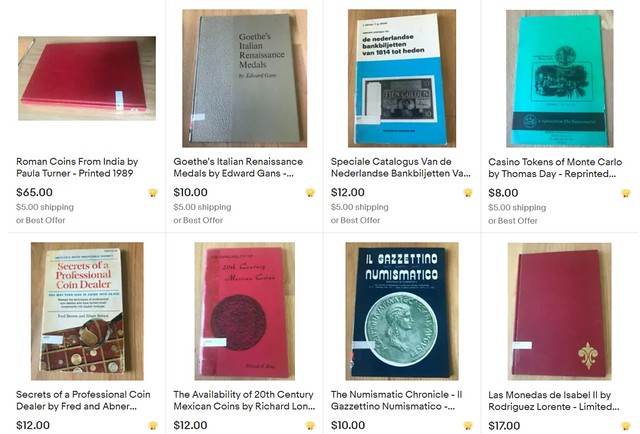
1000+ US & World Numismatic Books for Sale
by numismatistkenny
I recently purchased a collection of more than 1200 United States and World numismatic books covering a wide range of numismatic topics. Most books are in English but there are a number of books written in other languages.
I am in the process of listing the books on my eBay store. I anticipate it will take me two to three weeks to get all of the books listed. Here is a link that will take you directly to the numismatic book section of my numismatic eBay store:
I will write another post when I have finished adding all the listings but welcome you to view the listings I have up already. If you do not want to wait and desire a particular title, email me at numismatistkenny@gmail.com. I will let you know if I have that particular title(s) and what the cost will be.
All international sales will go through eBay's International Shipping Program. eBay is responsible for determining fees/custom charges. I have no control over those costs.
United States buyers will find the shipping cost noted in the eBay listing. I do combine ship to keep shipping costs as low as possible. Additionally, many of the books have collector value in addition to their great information. I am pricing the books below what others are selling them for as the books were sold to me at a reasonable cost.

PHILIPPINE SPECIAL EDITION REDBOOK SOLD OUT
Whitman Publishing reports that the special edition Redbook celebrating the Manila Mint centennial is sold out. -Editor
1920–2020 Centennial of the Manila Mint is Sold Out!

The 74th edition of the coin-collecting hobby's annual Guide Book of United States Coins (popularly known as the "Red Book") debuted in April 2020. A special limited edition of 212 copies was released with a custom goldfoil-stamped cover and a tip-in sheet celebrating the 100th anniversary of the opening of the Manila Mint. The limited print run sold out within six weeks. Sales of the special edition support the educational mission of the Philippine Collectors Forum.
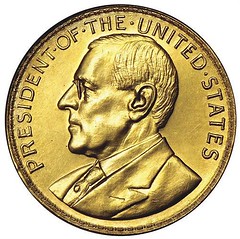
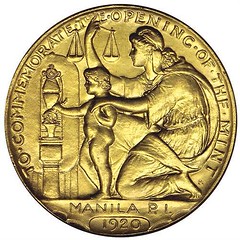
The front cover of the Manila Mint Centennial special edition features the reverse design of the so- called Wilson Dollar (HK-449/450), which was struck at the Mint of the Philippine Islands when it opened in Manila in 1920.
The Philippine Collectors Forum was established in August 2003 at the American Numismatic Association's World's Fair of Money in Baltimore, Maryland. The group was founded by Raymond Czahor and Ken Seymore with the active support of ANA president John Wilson. Seventy-five collectors attended the first meeting—the annual convention's largest club attendance that year except for the Boy Scouts of America. The Philippine Collectors Forum is a nonprofit group and an official member club of the ANA. It holds annual meetings at the World's Fair of Money. The Forum's mission is to promote education about U.S./Philippine coinage, medals, tokens, paper money, scrip, and other numismatic items.
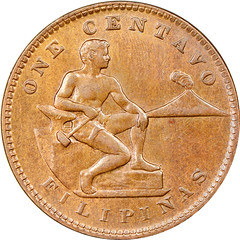
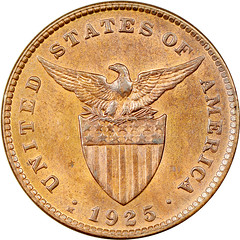
The Manila Mint traces its history back to the colonial era of the Philippine Islands. In April 1899, as a condition of the treaty ending the Spanish-American War, Spain transferred control of the Philippines to the United States. One of the government's early tasks was to sponsor a new territorial coinage. The resulting coins, introduced in 1903, were designed by Filipino silversmith, sculptor, engraver, and art professor Melecio Figueroa. They bear the names of both the Philippines (FILIPINAS, the Spanish name for the islands) and of the United States of America. The silver coins feature a female personification of the Philippines before the volcanic Mount Mayon (northeast of the capital city of Manila). The minor coinage shows a young Filipino man, bare-chested and seated at an anvil with a hammer.
In the early years most of the coins were produced at the San Francisco Mint and then shipped to the islands. On February 18, 1918, the Philippine Legislature passed an appropriations bill for construction of machinery for a new mint in Manila. The Great War was interfering with shipments from the United States. A local mint was seen as being more expedient and economical. In addition, a local mint would support the United States' goal of moving the Philippines toward its own governance and infrastructure.
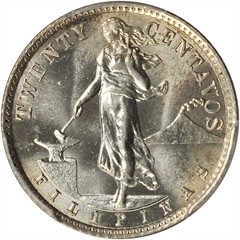

The mint was built in Manila in the Intendencia Building, which housed the offices and hall of the Senate, and the offices and vaults of the Philippine Treasury. Its machinery was designed and built in Philadelphia under the supervision of U.S. Mint chief mechanical engineer Clifford Hewitt, who also oversaw its installation in Manila. The facility was opened, with formalities and machine demonstrations, on July 15, 1920. The fanfare included the production of an official commemorative medal in gold, silver, and bronze. The first specimen of these medals was struck by Speaker of the House of Representatives Sergio Osmeña (later president of the Commonwealth in the final years of World War II).
The Manila mint produced coins for the Philippines from 1920 until Japanese forces invaded the islands in 1941, at which time it ceased operation. (The Philadelphia, Denver, and San Francisco mints would strike coins for the Philippines in 1944 and 1945.) Filipino and Filipino-American military service members, guerrillas, civilians, and leaders were vitally important in the Allied victory in World War II.
The mint's buildings were largely destroyed by bombing during the liberation of the Philippines later in the war.
The Commonwealth of the Philippines became an independent republic on July 4, 1946. Today the Philippine coins of 1903 to 1945, including those struck at the mint in Manila, are important mementoes of a significant chapter in U.S. history and numismatics. They are a testament to the close ties and special relationship between the United States and the republic and people of the Philippines.
The Philippine Collectors Forum is proud to honor the legacy of the Mint of the Philippine Islands with the 1920–2020 commemorative limited edition of the Guide Book of United States Coins.
To read the earlier E-Sylum article, see:
NEW BOOK: PHILIPPINE SPECIAL EDITION REDBOOK
(https://www.coinbooks.org/v23/esylum_v23n22a03.html)

NEW BOOK: THE MONEY PLOT
It won't be published until this fall, but here's a publicity release for a new book on the nature of money. While not truly numismatic, it sounds like something our history-curious E-Sylum readers would enjoy. -Editor
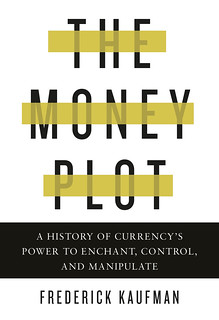 The Federal Reserve recently announced plans to inject $2 trillion into the economy amid the pandemic, money that seems to be appearing from nowhere. In his scintillating, controversial history The Money Plot: A History of Currency's Power to Enchant, Control, and Manipulate (Other Press Hardcover; November 24, 2020; ISBN: 9781590517185; $27.99), Frederick Kaufman, a journalist, Professor, and author of Bet the Farm: How Food Stopped Being Food, delves into the past 65,000 years to demystify the concept of money, and see through the fog of modern finance to understand how the Federal Reserve creates those promised trillions – and the twisted path that led here.
The Federal Reserve recently announced plans to inject $2 trillion into the economy amid the pandemic, money that seems to be appearing from nowhere. In his scintillating, controversial history The Money Plot: A History of Currency's Power to Enchant, Control, and Manipulate (Other Press Hardcover; November 24, 2020; ISBN: 9781590517185; $27.99), Frederick Kaufman, a journalist, Professor, and author of Bet the Farm: How Food Stopped Being Food, delves into the past 65,000 years to demystify the concept of money, and see through the fog of modern finance to understand how the Federal Reserve creates those promised trillions – and the twisted path that led here.
The Money Plot reminds us that whether its form is polished shells, bills or Bitcoin, the truth at the core of every currency, even Federally mandated trillions, is that it's all a fiction. Currency is simply a fairy tale, a metaphor that humans have believed in and worshipped more than anything else on Earth. Kaufman doesn't mince words in pointing out the money-fiction absurdity on which we've built and destroyed societies, invaded and been conquered. In our contemporary world, where most money exists in a complex yet poorly understood web of computer screen abstraction – but one that's capable of causing a global meltdown (or two) – this metaphor is wearing thin.
In The Money Plot, Kaufman never shies away from the politically incorrect and the absurd. He examines the concept of the trophy wife, further examining the unfortunate history of women being used as bartering tools. He sees parallels between the history of Jesus and his followers and that of currency, concluding that people believe in both using the same structural elements of belief. Kaufman points out that during the Black Death, the biggest lender of the time was the Catholic Church, who intertwined money with God, encouraging worshippers to donate to the clergy to become closer to God.
In The Money Plot you'll find:
- All the objects, from strange to outright disturbing, that have been used as currency over the millennia, including shells, human skulls, and the sounds of gongs
- How America was forced to get off the gold standard, accomplished with a simple speech
- The global value of counterfeit goods and currencies (over $3 trillion)
- Pope Innocent IV (1195-1254), widely credited with originating the modern-day concept of "corporations are people"
- How they played "heads or tails" in ancient Rome
- Why less than 10% of the world's money exists in cash
- How much George Washington would be worth in today's money
- How the Schlickenthalers got its current name, the dollar
Referencing everything from Bachelier's The Theory of Speculation and Sir Isaac Newton to Kim Kardashian's Instagram account and the Planet of the Apes movies, Kaufman brilliantly traces how humans' uncanny ability to turn objects into mental constructs – creating the fiction of money – has shaped every part of history, invaded every narrative, and influenced anyone who has ever been in charge. With the same ease that Salt: A World History and Freakonomics condensed thousands of years of history into a highly informative yet entertaining format, The Money Plot explains how money was created, used, and is constantly being transformed.
"In The Money Plot, Frederick Kaufman offers a startling thesis—that money is a metaphor, a fiction—and makes it plausible by brilliantly interweaving economics, literary theory, anthropology, and political history. Distilling vast erudition into wonderfully readable prose, Kaufman gives us an important book that brims with fresh insights into the ways that money, from ancient times to today, has been a floating symbol with no stable meaning."
—David S. Reynolds, winner of the Bancroft Prize for American History and author of Abe: Abraham Lincoln in His Times
ABOUT THE AUTHOR: Frederick Kaufman, an English professor by training and profession, has for the past decade focused his attention on the fiction that is money. His unorthodox insights into the ways of Wall Street have resulted in numerous magazine articles for publications ranging from Scientific American to Wired to Foreign Policy to Harper's, as well as television appearances on NBC, Bloomberg, Fox Business Network, and Democracy Now!, and invitations to lecture in both the United States and Europe, including an address to the General Assembly of the United Nations. This is his fourth book.
The Money Plot: A History of Currency's Power to Enchant, Control, and Manipulate
By Frederick Kaufman
Other Press Hardcover \ On Sale: November 24, 2020
ISBN: 9781590517185 \ Price: $27.99
For more information, or to order, see:
The Money Plot
(https://otherpress.com/product/the-money-plot-9781590517185/)
NEW BOOK: SMALL CHANGE
While looking for other things I came across this title published last year. Here's information from the publisher's web site. -Editor
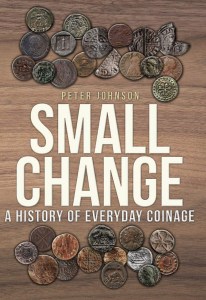 Since the Greeks of Asia Minor invented coined money in the late seventh century BC, the emphasis throughout history has been to focus on minting higher value pieces, with the production of small denomination coins used by ‘the poorer sorts' often being neglected. Imagine trying to buy an 80p loaf of bread in the corner shop if our currency consisted only of £20 notes. Many people the world over in times past did not have to imagine - this was a conundrum they faced every day.
Since the Greeks of Asia Minor invented coined money in the late seventh century BC, the emphasis throughout history has been to focus on minting higher value pieces, with the production of small denomination coins used by ‘the poorer sorts' often being neglected. Imagine trying to buy an 80p loaf of bread in the corner shop if our currency consisted only of £20 notes. Many people the world over in times past did not have to imagine - this was a conundrum they faced every day.
Human ingenuity being what it is, this inconvenience was resolved in many different ways. Here, Peter Johnson explores these responses, from those which were eminently practical to others which, on first sight, appear somewhat bizarre, if not comical. The spotlight is on Britain, exploring both its official and unofficial coinages, though the dilemmas faced in other countries at points of their history are also covered in this, a social and often local history of small change.
ISBN: 9781445689708
Book Format: Paperback
pages: 96 pages
Publication Date: 15 Aug 2019
Height: 234
Width: 165
Illustrations 180
For more information, or to order, see:
SMALL CHANGE
A HISTORY OF EVERYDAY COINAGE
(https://www.amberley-books.com/small-change.html)
Here's a short review from Current Archaeology. -Editor
The production and use of coinage are closely tied to many other aspects of social history, as is demonstrated in this accessible and engaging book. Focusing on smaller denominations, both those produced officially and the ingenious local responses to a lack of small change, it presents an overview of the development of money around the world, before discussing the story in Britain in detail.
The author uses examples of specific coins and tokens to demonstrate his themes, using original photographs with informative captions. Of particular interest is the discussion of the alterations made to coinage as a reflection of the social and political situation, which highlights the insights into other aspects of life offered by numismatics. The work could have benefited from a bibliography, but it succeeds in presenting a succinct and thorough history of Britain's coinage, and through this a history of Britain itself, from AD 150 to the present day.
To read the complete article, see:
Review – Small Change: a history of everyday coinage
(https://www.archaeology.co.uk/articles/review-small-change.htm)
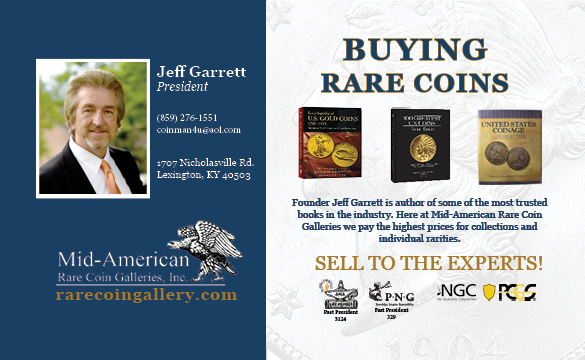
BOOK REVIEW: U.S. CLASSIC GOLD COINS OF 1834-1839
Jim Dixon kindly submitted this review of Daryl Haynor's new book on Classic Gold. Thanks! -Editor
 As Q. David Bowers indicates in his foreword to this book "Classic Gold quarter eagles and half eagles are a betwixt and between series". They are preceded by "early" American gold coins (sometimes referred to as Old Tenor gold) and succeeded by the long-lived Liberty Head series. There is a great deal of literature on both series, but little was written in the public domain about Classic Head gold coins.
As Q. David Bowers indicates in his foreword to this book "Classic Gold quarter eagles and half eagles are a betwixt and between series". They are preceded by "early" American gold coins (sometimes referred to as Old Tenor gold) and succeeded by the long-lived Liberty Head series. There is a great deal of literature on both series, but little was written in the public domain about Classic Head gold coins.
Dr. John W McCloskey was the primary researcher in this field but the only published work I was able to find was his essay entitled "A Study of Classic Half Eagles, 1834-1839" which was included in "America's Gold Coinage" edited by William E. Metcalf in 1989. For quarter eagles, the only serious work I was able to locate is a Heritage Auctions blog by Mark Borckardt, "Classic Head Quarter Eagles":
https://coins.ha.com/s/d/cqedvg.pdf
This fundamental lack of information regarding Classic Gold coins has been rectified by Daryl Haynor's new book entitled "United States Classic Gold Coins of 1834-1839". It is a delicious numismatic cocktail of two parts history and economics, one part early eighteen century politics and three parts coin descriptions, images and statistics. This 368 page book is perfect for numismatists who are looking for the ultimate reference on Classic Head gold coinage.
This reference is so exhaustive that Mr. Haynor includes a section on "How to use this book" prior to Chapter 1. In this section he defines die marriages, die states, explains how he estimated populations, defines the rarity scale he uses in the book (a modified Overton scale) and then discusses his processes for determining finest known coins for a given year and mint. I found this section indispensable as I read through the descriptions of individual die marriages. I especially liked the methodology Mr. Haynor utilized for identifying reverses. Dr. McCloskey used letters to describe unique reverse dies for a given year but started his sequence anew each year. As a result, it was difficult to determine if a reverse die was used in subsequent years. Mr. Haynor has also used letters to identify reverse dies but has maintained the uniqueness of reverse dies throughout each series so the use of dies in multiple years is identified. In doing so, Mr. Haynor has replaced the McCloskey nomenclature for defining Classic Gold die marriages with the more precise HM (Haynor-McCloskey) identifications that are now being used by the major auction houses and are attributable as varieties at both PCGS and NGC.
Chapters One through Nine are a fascinating look at the economics, politics, and personalities of the 1830's. Even if you do not collect coins, these sections represent of the best reflection I have read of these turbulent times. Unlike many other books, the references are not to other coin books but to the original 19th century documents. Mr Haynor obviously performed a great deal of original research at the Mint, the Library of Congress, the National Archives, etc. and shared images of many original documents.
Chapter Ten, "Die Identification" provides very detailed definitions of the terms that Mr. Haynor uses in subsequent chapters on quarter eagles and half eagles. This information is important for Classic Gold because the dies were hand punched.
Chapter Eleven contains information on the 28 die marriages of quarter eagles. It begins with mintage statistics and images that are valuable in the discussion of individual die pairings that follow. For each year, there is a short discussion about the history, politics, economics, and/or personalities relevant to that year. This is followed by:
- a write-up on die descriptions/characteristics for the year
- detailed descriptions and high quality images of each obverse
- an obverse die comparison (when needed)
- detailed descriptions and high quality images of each reverse
- a reverse die identification (when needed)
- an estimated population and rarity of each die marriage
- an image of each die marriage for that year including the descriptions used in the identification of obverses and reverses. An example of this is shown below
- a detailed discussion of the typical coin that includes rarity and "the look" of that marriage. It also identifies die characteristics (e.g. wear, cracks and bulges) frequently seen for that marriage.
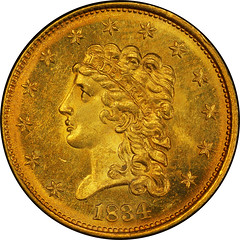
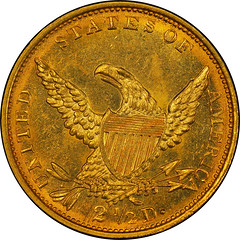

Once the individual die marriages are described, the total known, distribution by grade and finest known coins for that year/mint are discussed. Following the analysis of the circulation strikes, a section outlining the proof coins (if any) for the year begins. In these sections, Mr. Haynor again demonstrates his expertise doing independent research regarding these proofs. History and politics are highlighted for these exceedingly rare coins.
Chapter Twelve is like Chapter Eleven but addresses half eagles and includes information on the 34 unique die marriages. John McCloskey wrote about the half eagle series in his 1989 essay. As you would expect with Mr. Haynor's in depth research, a great deal of context/color is added to the pioneering work done by Dr. McCloskey.
For data geeks like me, the Appendices are the cherry on top of the ice cream sundae I just devoured!
- Appendix A provides the Annual Report Mintage for the two series. Notations and clarifications are made to the reported figures to give proper context for these figures.
- Appendix B is a cross reference of most known references to the various die marriages of the quarter eagles.
- Appendix C is a cross reference of most known references to the various die marriages of the half eagles.
- Appendix D discusses the annual assay of coins during this period.
- Appendix E delves into "Contemporary Counterfeits" of capped bust and classic head gold coins.
- Appendix F provides the "Die Emission Sequence of Reverse A" for half eagles. Reverse A is the most prevalent reverse in the series. It was used in 1834, 1835 and 1836. Based on Mr. Haynor's research this reverse die was used to mint some 1835 coins prior to its use with some 1834 dated coins.
- Appendix G is a detailed Bibliography.
The book ends with a very touching tribute to John McCloskey written by his wife and Bradley Karoleff.
In summary, this book is, and will remain, the ultimate reference for Classic Gold Coins and the history of economics, politics, and personalities in the 1830s. I highly recommend it for numismatists and history buffs alike.
Jim Dixon is a dated gold collector who recently began collecting Classic Gold Half Eagles. His enthusiasm for the series increased dramatically after receiving reference information from the author.
To read the earlier E-Sylum article, see:
NEW BOOK: U.S. CLASSIC GOLD COINS OF 1834-1839
(https://www.coinbooks.org/v23/esylum_v23n12a02.html)
For more information, or to purchase the book, see:
United States Classic Gold Coins of 1834-1839
(https://www.wizardcoinsupply.com/united-states-classic-gold-coins-of-1834-1839)

MORE ON COIN COLLECTING ALBUMS, VOLUME THREE
Author David Lange supplied these sample pages from his upcoming book on Whitman Publishing Company folders and albums. Thanks! -Editor
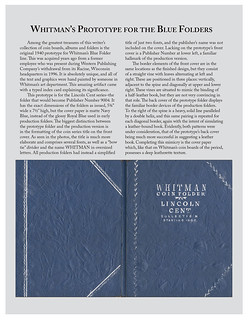
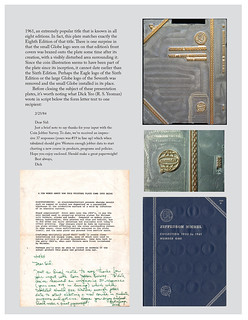

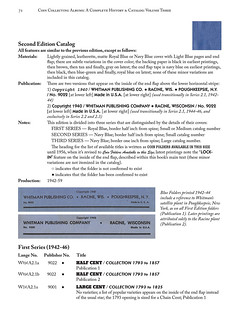
Looks great! For more information see the below links and Dave's ad elsewhere in this issue. -Editor
To visit Dave's website, see:
http://www.coincollectingboards.com/
To read the earlier E-Sylum article, see:
NEW BOOK: COIN COLLECTING ALBUMS, VOLUME THREE
(https://www.coinbooks.org/v23/esylum_v23n25a03.html)
FIRST EDITION FANTASTIC 1804 DOLLAR CENSUS UPDATE
First Edition Fantastic 1804 Dollar Census Update
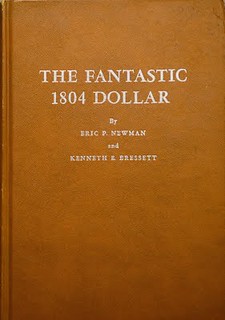 As announced in The E-Sylum on May 24, Joel Orosz and Len Augsburger are constructing a census of copies of the first edition, first printing of Eric P. Newman and Kenneth E. Bressett's The Fantastic 1804 Dollar. To date, 25 copies have been identified, with a total probable population of 42 copies. We've been scouring online resources such as Newman Portal, in addition to our own libraries, but the best information is coming from fellow collectors.
As announced in The E-Sylum on May 24, Joel Orosz and Len Augsburger are constructing a census of copies of the first edition, first printing of Eric P. Newman and Kenneth E. Bressett's The Fantastic 1804 Dollar. To date, 25 copies have been identified, with a total probable population of 42 copies. We've been scouring online resources such as Newman Portal, in addition to our own libraries, but the best information is coming from fellow collectors.
If you have a copy not previously reported to Len or Joel, feel free to forward information to leonard.augsburger@wustl.edu. As noted earlier, first editions can be identified by the table of contents – in the first edition chapter VIII is entitled "The Origin of 1804 Originals," while in subsequent editions chapter VIII is entitled "The Diplomatic Gift Background."
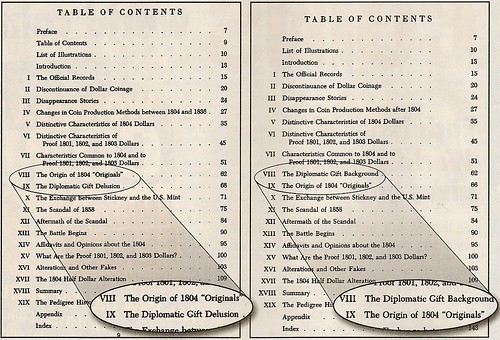
Coin World graphic of Tables of Contents from the two variants
Please pitch in and help if you can. Double check your copy! These early printings are tangible reminders of a pivotal event in American numismatic history. -Editor
To read earlier E-Sylum articles, see:
COIN WORLD ARTICLE FEATURES FANTASTIC 1804 DOLLAR BOOK VARIETIES
(https://www.coinbooks.org/esylum_v11n44a12.html)
FANTASTIC 1804 DOLLAR "1ST EDITION" CENSUS
(https://www.coinbooks.org/v23/esylum_v23n21a12.html)
To read 1804 Dollar Book articles in the Summer 2001 Asylum, see:
The Asylum, Summer 2001
(https://nnp.wustl.edu/library/book/436)

NEWMAN PORTAL ADDS DAVISSONS SALE CATALOGS
The latest additions to the Newman Numismatic Portal are the Davissons Ltd. auction sale catalogs. Project Coordinator Len Augsburger provided the following report. -Editor
Davissons Ltd. Auction Sale Catalogs Added to Newman Portal

Davissons Ltd., a Cold Spring, MN auction firm, specializes in ancient Greek and Roman coins, in addition to coins, tokens and medals of Great Britain, as well as historic United States and world coins and medals. Allan Davisson is a veteran in the numismatic business, with sales dating back to 1975. Auction sale catalogs of this firm have been added to Newman Portal for the years 2012-2020. Their most recent sale (E-Auction 35) included ancient coins, British trade tokens, Civil War patriotic tokens, and U.S. type coins.
Included in this sale (lot 231) was an Abraham Lincoln medal from the Columbian Exposition, held in Chicago in 1893. The Robert P. King catalog of Lincolniana appeared in the February 1924 Numismatist, and this medal, engraved by Henry H. Zearing, is cataloged as no. 504. The reverse of this medal quotes from Lincoln's second inaugural address, which is today inscribed at the Lincoln Memorial in Washington, DC. Lincoln's address was equally brief and substantial and well worth contemplating anew in the present time.
Image: Lincoln medal from the Columbian Expo, Davisson's E-Auction 35, lot 231. King 504, Eglit 85A.
Link to Davissons home page:
https://davcoin.com/
Link to Davissons auction sale catalogs on Newman Portal:
https://nnp.wustl.edu/library/auctioncompanydetail/510614
Link to The Numismatist on Newman Portal:
https://nnp.wustl.edu/library/publisherdetail/510969
VIDEO: UNITRADE PRESIDENT IRAJ SAYAH
These are selections from the David Lisot Video Library that feature news and personalities from the world of coin collecting. David has been attending coin conventions since 1972 and began videotaping in 1985. The Newman Numismatic Portal now lists all David's videos on their website at:
https://nnp.wustl.edu/library/multimediadetail/522852
This week's subject is UNITRADE's President Iraj Sayah. -Editor
Third International Numismatic Friendship Party Long Beach Expo 1991
Iraj Sayah, President, UNITRADE
David Lisot, Video Producer
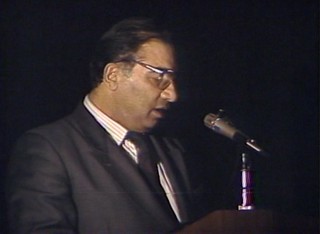 Iraj Sayah was a wealthy Iranian business involved in the coin market in the 1990's. He is famous for his efforts to unify the coin industry. His company UNITRADE was instrumental in the first attempts at trading rare coins sight unseen. In 1991 at the Long Beach Coin Expo he hosted the third annual Friendship Party for all the numismatic dealers. He spared no expense to entertain and the gathering has become legendary. If you were around at Long Beach in 1991 were you there? Watch this video to see who was!
Iraj Sayah was a wealthy Iranian business involved in the coin market in the 1990's. He is famous for his efforts to unify the coin industry. His company UNITRADE was instrumental in the first attempts at trading rare coins sight unseen. In 1991 at the Long Beach Coin Expo he hosted the third annual Friendship Party for all the numismatic dealers. He spared no expense to entertain and the gathering has become legendary. If you were around at Long Beach in 1991 were you there? Watch this video to see who was!
An excerpt of the video is available for viewing on the Coin Television YouTube Channel at:
https://youtu.be/B-Ci5iEduTg

CORONAVIRUS UPDATES: JUNE 28, 2020
Here's the latest compilation of coronavirus updates from readers, organizations and companies. -Editor
Mint Response on Coin Shortage (June 22, 2020)
Lou Golino published an article on Coin Update about the coin shortage the country is facing. See the complete article online. Here's an excerpt of a quote from U.S. Mint Director David Ryder. The article also touches on the issue of digital currencies. -Editor
"As always, and especially during this challenging time, the Mint is committed to supporting our Nation's economy and commerce through the production of circulating coinage.
"In normal circumstances, retail transactions and coin recyclers return a significant amount of coins to circulation on a daily basis. However, the precautions taken to slow the spread of the virus have reduced retail sales activity and significantly decreased deposits from third-party coin processors, resulting in increased orders for newly minted coins produced by the United States Mint (Mint).
"Throughout the public health challenge, the Mint has continued to meet its essential mission of manufacturing coins to facilitate national commerce. At the same time, the Mint continues to take all appropriate steps to safeguard the health and safety of our workforce."
To read the complete article, see:
Pandemic and shutdowns result in circulating coinage shortage with effects on the economy, coin collecting, and the future of money
(http://news.coinupdate.com/pandemic-and-shutdowns-result-in-circulating-coinage-shortage-with-effects-on-the-economy-coin-collecting-and-the-future-of-money/)
U.S. Coin Shortage Hits Grocers Hard
Jeremy Schneider writes:
"I'm sure you've received a glut of reports on the impact of the coin shortage; but I thought this was interesting since it was noted from the National Grocers Association. The impact is felt especially hard as it relates to those businesses that rely heavily on cash transactions and the lower income."
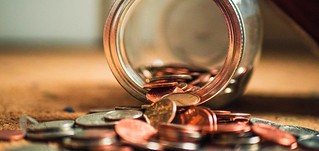 The NGA said cash is used more frequently among low-income earners who may not have access to a full range of banking services. About 43% of payments are made in cash by people with incomes under $25,000, and these consumers are the ones most at risk of having their purchases disrupted because of the coin shortage.
The NGA said cash is used more frequently among low-income earners who may not have access to a full range of banking services. About 43% of payments are made in cash by people with incomes under $25,000, and these consumers are the ones most at risk of having their purchases disrupted because of the coin shortage.
A bank manager told NPR that convenience stores and grocery stores that still operate with cash will have to make changes to their operations.
Though the rationing of coin distribution is expected to be temporary, NGA and the other organizations said this is already an emergency situation for member businesses.
To read the complete article, see:
U.S. coin shortage hits grocers hard
(https://www.grocerydive.com/news/us-coin-shortage-hits-grocers-hard/580476/)
In Wichita, KS a local chain is actively buying coins from its customers. Here's an article and local TV video report. -Editor
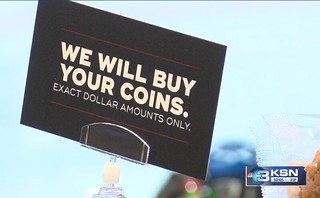 If you have any extra pocket change, QuikTrip is asking you to bring it to one of its stores to help out.
If you have any extra pocket change, QuikTrip is asking you to bring it to one of its stores to help out.
"I brought them, and they took them," said Tommy Miller, QuikTrip customer.
Miller did not hesitate to trade in his piggy bank full of pennies for cash at a Wichita QuikTrip
"Man I got a bunch of pennies. I've been finding all over the place because people throw pennies everywhere," said Miller.
The store is buying back quarters, dimes, nickels, and pennies to help with the shortage of coins.
To read the complete article, see:
Cash for coins: QuikTrip will take your pocket change
(https://www.ksn.com/news/local/cash-for-coins-quiktrip-will-buy-your-pocket-change/)
To read the earlier E-Sylum article, see:
THE COVID-19 COIN SHORTAGE
(https://www.coinbooks.org/v23/esylum_v23n25a11.html)
David Kahn Rare Coins (June 22, 2020)
In a customer email DKRC writes:
 "Finally, the ANA has made an official announcement about August's World's Fair of Money. The show is officially "postponed", though it is not clear what that really means, other than the ANA is in the process of exploring alternative dates and locations. All we know for certain at this moment is that there will not be a big show in Pittsburgh this summer. This, I think, is an excellent decision. Aside from the significant health concerns, the prospect of holding a show where perhaps only 20% of the dealers could be in the room together at one time - without a single customer! - is an absolute non-starter. I think we simply have to get used to the idea that the next big show on the horizon might be FUN in January. Maybe.
"Finally, the ANA has made an official announcement about August's World's Fair of Money. The show is officially "postponed", though it is not clear what that really means, other than the ANA is in the process of exploring alternative dates and locations. All we know for certain at this moment is that there will not be a big show in Pittsburgh this summer. This, I think, is an excellent decision. Aside from the significant health concerns, the prospect of holding a show where perhaps only 20% of the dealers could be in the room together at one time - without a single customer! - is an absolute non-starter. I think we simply have to get used to the idea that the next big show on the horizon might be FUN in January. Maybe.
For 3+ months, our supply chain has been severely impacted. Most of our coins come from smaller shows and shops all over the country, and the last show or shop I've been to out of my immediate home area was on March 8th in Danbury, CT. Until a few days ago, that is. I took a crazy, 22 hour road trip last week, and visited 4 shops in VA, TN, and NC, then high-tailed it home with newps in tow! I am not yet ready to be out for multiple days, primarily because I'm not yet ready to stay in a hotel, but a very long day like that proved to be both manageable and productive. Though the whole experience added just one more layer of oddity...I haven't seen these "regular stop" folks for an extended period of time, yet because they had been closed for at least some of that time, they didn't have their usual quantities and assortments of coins. Still, there was enough to make it worthwhile.
"The retail sales market remains very, very active. Good quality, original, appealing collector coins do not hang around for long...if they are realistically priced. Website sales are excellent, and sales on ebay continue to set records, almost every week. It seems that collectors are having no problem shifting to on-line coin buying, though having confidence in the seller is of primary importance. Those on-line sellers with established relationships and reputations, as well as those who provide excellent photos and honest descriptions, seem to be doing quite well. And when retail is good, then it follows that wholesale will be good as well. That is certainly true for DKRC. Our biggest issue is replacing the great coins we're selling.
"There is hope though. As noted, I bought some coins last week. I am planning another, similar trip to a different area this week. We have built-up a little bit of inventory that is in the grading process at PCGS, and have started sending coins to CAC again. And, we've been the beneficiaries of several good customers selling us some great material. All is not back to normal, but our supply chain is improving, and trending in the right direction. It feels like we're finally making progress towards getting over this huge hump."
To check out DKRC online stock, see:
https://www.davidkahnrarecoins.com/
To read the earlier E-Sylum article, see:
CORONAVIRUS UPDATES: JUNE 21, 2020
(https://www.coinbooks.org/v23/esylum_v23n25a13.html)

NOTES FROM E-SYLUM READERS: JUNE 28, 2020
Tenino Wooden Dollar Number 1
Dave Schenkman writes:
"Your mention of Tenino wooden money reminded me of some items I acquired many years ago, possibly from George Fuld when I was buying a lot of tokens from him. This 1933 wooden money is notable because of the serial number one. I also have serial number three of the fifty cents."
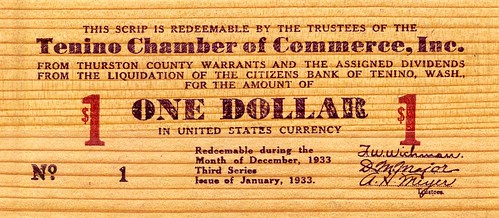

Wow! A fantastic item. Thanks for sharing this. -Editor
To read the earlier E-Sylum article, see:
CNN COVERS TENINO'S 2020 WOODEN MONEY
(https://www.coinbooks.org/v23/esylum_v23n25a31.html)
Query: Southeast Asia Countermark Identification Sought
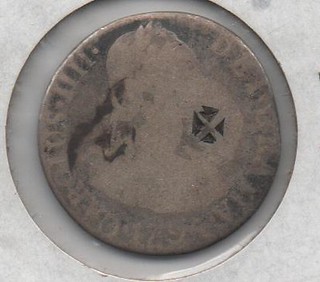 Howard Daniel writes:
Howard Daniel writes:
"I bought this coin as a Southeast Asia countermark but I cannot identify it. Does anyone know its origin? If so, please contact me at HADANIEL3@MSN.COM"
Can anyone help? -Editor
Portraits of Native Americans Wearing Peace Medals
Michael Wehner writes:
 "I thought E-Sylum readers might find this print of the Pawnee brave, Petalesharoo, interesting as he is wearing a large Peace medal. A description of this series of prints and the paintings they were made from offered by dealer Josephine Arader. Two other Native Americans are also depicted wearing their smaller medals."
"I thought E-Sylum readers might find this print of the Pawnee brave, Petalesharoo, interesting as he is wearing a large Peace medal. A description of this series of prints and the paintings they were made from offered by dealer Josephine Arader. Two other Native Americans are also depicted wearing their smaller medals."
Thanks! Below are links to the images. -Editor
Soon after Thomas L. McKenney was appointed Superintendent of Indian Trade in 1816, he struck upon the idea of creating an archive to preserve the artifacts, implements, and history of the Native Americans. The Archives of the American Indian became the first national collection in Washington and were curated with great care by McKenney through his tenure as Superintendent and also when he served as the first head of the Bureau of Indian Affairs beginning in 1824. Artist Charles Bird King arrived in town in 1822 and, during a visit to his studio, McKenney was inspired to add portraits to the archives. King would, for the following twenty years, capture many of the visiting Indian dignitaries, as well as make copies of watercolors created in the field by the less able James Otto Lewis. Many saw the great value in preserving what was already known to be a vanishing race, but others in government criticized the expenses incurred. The visiting Indian delegations who had come to Washington to meet with the "Great Father" (their name for the president) would inevitably tour the Indian gallery, which was housed in the War Department building, and were generally impressed, many requesting that their portrait be painted and added to the collection. This seemed to help smooth relations during the often tense treaty negotiations.
For more information, or to purchase, see:
Pawnee Brave, Petalesharoo
(https://aradernyc.com/products/thomas-mckenney-1785-1859-james-hall-1793-1868-pawnee-brave-petalesharoo)
Chon-Ca-Pe
(https://aradernyc.com/products/thomas-mckenney-1785-1859-james-hall-1793-1868-chon-ca-pe)
Chippeway Chief, Shin-Ga-Ba-W-Ossin
(https://aradernyc.com/products/thomas-mckenney-1785-1859-james-hall-1793-1868-chippeway-chief-shin-ga-ba-w-ossin)
PCGS Grading Video
Max Hensley writes:
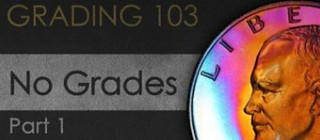 "I stumbled onto some YouTube videos by PCGS that explain their standards for "details" grading. One segment included cleaning. No, not all "cleaned" coins are consigned to details purgatory. "Cleaned" are hair-lined pieces from abrasive cleaning or orange coppers (some of these fall into other details categories like environmental damage). "Maybe's" are pieces that were carefully dipped - until they become flat milky things. OK's appear to be gently soap-and-water washed pieces to remove dirt and grime. It's complicated. Best to watch the video at
"I stumbled onto some YouTube videos by PCGS that explain their standards for "details" grading. One segment included cleaning. No, not all "cleaned" coins are consigned to details purgatory. "Cleaned" are hair-lined pieces from abrasive cleaning or orange coppers (some of these fall into other details categories like environmental damage). "Maybe's" are pieces that were carefully dipped - until they become flat milky things. OK's appear to be gently soap-and-water washed pieces to remove dirt and grime. It's complicated. Best to watch the video at
Filed Rims, Questionable Color & Cleaning - PCGS No Grades: Part 1
."
Gary Dunaier adds:
"Regarding your comment that you'd be "scared to death" to try cleaning coins on your own: Three words: J. Sanford Saltus."
To read the earlier E-Sylum article, see:
NOTES FROM E-SYLUM READERS: JUNE 21, 2020 : Cleaning vs. Conservation
(https://www.coinbooks.org/v23/esylum_v23n25a14.html)
THE BOOK BAZARRE
CHUCK MAYER OF CHUCK'S COIN CORNER
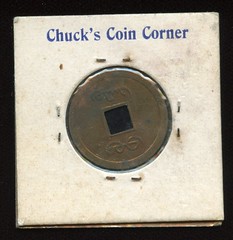 Regarding Kevin Day-Thorburn's question about "Chuck's Coin Corner"
Pete Smith writes:
Regarding Kevin Day-Thorburn's question about "Chuck's Coin Corner"
Pete Smith writes:
"Tom Casper wrote an article for Milwaukee Numismatic News for June 2019. He illustrated the article with business cards he acquired from local dealers over the years. One of these was from Chuck's Coin Corner. Casper identified the owner as Chuck Mayer."
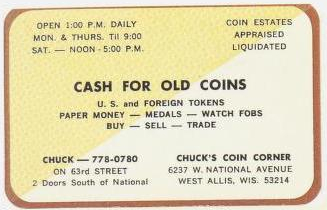
Tom Casper writes:
"I spoke to Chuck Mayer's wife. She shared the following numismatic information about him."
Charles (Chuck) B. Mayer was born in New York and later moved to Milwaukee, WI as a child. After high school he joined the Army, and when discharged attended the University of Wisconsin-Milwaukee. His first job was as a bookkeeper at the M&I Bank. In the early 1960's he opened his first coin store in Milwaukee 3927 W. North Ave. He named it Chuck's Coin Corner. In about 1964 he moved his store to 6237 W. National Ave. in West Allis, WI, suburb of Milwaukee. He remained here until 1973 when he moved to Necedah, WI. He sold coins under the same name as well as used books. He was a member of the Milwaukee Numismatic Society and the American Numismatic Association. Chuck passed away on 12-16-1989 at the age of 56.
Tom adds:
"His wife remembers him stamping his business name on 2x2 holders and coin envelopes. I regularly visited his shop in West Allis and bought exonumia from him. He was very well liked and a very honest coin dealer as well as a collector."
She confirmed that the pictured 2x2 holder is Chuck's stamp. Mystery solved! Thanks, everyone. -Editor
To read the earlier E-Sylum article, see:
NOTES FROM E-SYLUM READERS: JUNE 21, 2020 : Query: Chuck's Coin Corner
(https://www.coinbooks.org/v23/esylum_v23n25a14.html)
NUMISMATIC COLLECTORS GUILD SILVER DOLLAR SETS
Pete Smith submitted these notes on the "United States Mint Silver Dollars" set discussed earlier. Thank you! -Editor
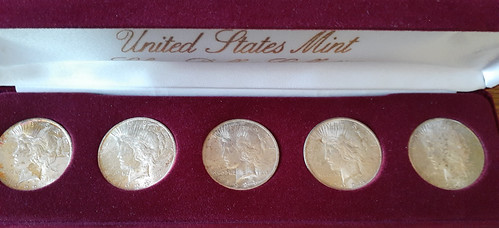
While I can't identify the set of Peace Dollars shown in recent issues of The E-Sylum I have found ads for something similar.
Ads offering United States Mint Silver Dollars have appeared in popular magazines and some local newspapers. These were for Morgan Dollars. Attached is a copy of such an ad.
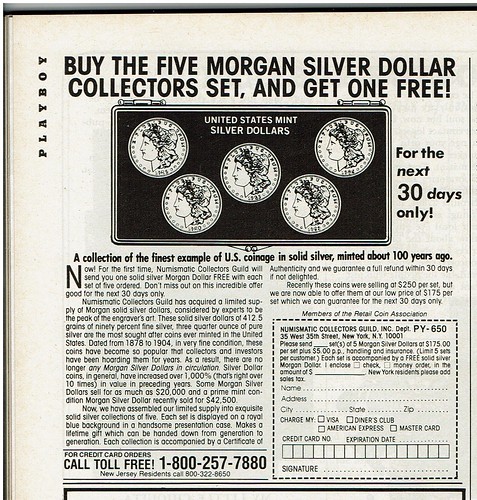
Popular Science, November 1980, page 152.
The Rotarian, November 1980, page 51.
The Indianapolis Star, February 1, 1981, page 162.
Field & Stream, February 1981, page 138.
The Rotarian, February 1981, page 55.
Popular Science, February 1981, page 172.
The Journal Times, Racine, Wisconsin, February 22, 1981.
Playboy Magazine, February 1982, page 198.
Kannapolis Daily Independent, November 22, 1981, page 74.
A similar set of three Peace Dollars was advertised in:
The Morning Call, Allentown, PA, May 23, 1982, page 159.
The Pittsburgh Press, August 22, 1982, page 395.
Springfield Leader and Press, August 22, 1982, page 98.
El Paso Times, October 10, 1982, page 105.
The Daily Oklahoman, October 10, 1982, page 221.
The San Bernardino County Sun, November 14, 1982, page 96.
Numismatic Collectors Guild was the subject of several lawsuits. In a trademark infringement case they were identified as a division of Novel Guild, Inc. They claim to be a member of the Retail Coin Dealers Association and that senior officers are life members of the ANA.
Later doing business as The Numismatic Guild, they placed full page ads in The Numismatist. They stated, in part:
"The Numismatic Guild, one of the oldest and largest numismatic dealers in the United States, is a major force in the rare coin marketplace. For almost 40 years, the Guild has helped develop comprehensive coin portfolios for both astute collectors and knowledgeable investors. In addition we have been creating innovative numismatic investment programs for a select group of influential Financial Planners and Counselors."
Stephen York Rappaport was listed as company president. Mark Shoemaker also worked there. In 1989 the contact name was Ronald (James) Manganiello.
When I was a coin buyer for a local dealer, I came across sets like these occasionally. We would immediately break up the set and throw the coins in a bucket with circulated Morgan Dollars. I don't recall seeing a set with peace dollars but that may just mean that they made no impression as anything special.
To read the earlier E-Sylum articles, see:
NOTES FROM E-SYLUM READERS: JUNE 14, 2020 : Query: United States Mint Silver Dollar Collection
(https://www.coinbooks.org/v23/esylum_v23n24a13.html)
NOTES FROM E-SYLUM READERS: JUNE 21, 2020 :
On the "United States Mint" Silver Dollar Collection
(https://www.coinbooks.org/v23/esylum_v23n25a14.html)

VOCABULARY TERM: MELTING
Dick Johnson submitted this entry from his Encyclopedia of Coin and Medal Terminology. Thanks. -Editor
Melting. Destruction of existing coins and medals or metallic artifacts for recovery of the metal content. Precious metal numismatic objects are extremely vulnerable – gold particularly so – to intentional melting for the salvage value of the metal. This occurs for political reasons, like war funding drives, as well as economic reasons, like a rise in the price of metal greater than the face value of the coin, or the value the object is made from. In several wars, Germany offered iron medals and jewelry items in exchange for gold objects to fund the costs of warfare. On the other hand, an attempt in 1980 by the Texas Hunt brothers to corner the world supply of silver, the price rose to over $55 per ounce. As a result tons of silver medals, along with other silver objects were destroyed in what was called "the great silver melt."
The economic rule of Gresham's law – bad money drives out good money – applies when the bullion value of coins is greater than their face value; they end up in the melting pot. Infrequently a recoinage is required where all old coins are recalled and new coins struck (recoin) and issued. For many mints of the world, particularly early in their existence, their only source of coinage metal is melting coins of other nations. At times when a supply of silver is not readily available, silver coins are melted to be fashioned into silverware and silverplate. This occurred in the United States prior to the discovery of silver deposits in the West. The term coin silver was applied to these items made from melted silver coins.
In other instances, unsold or undistributed numismatic items are infrequently melted to recover their salvage metal value (as with so many commemorative half dollars in the 1930s in the United States). Worn-out and withdrawn coins are melted to end the normal life-span of coins. Compare remelt.
Numismatic items made from melted objects. An entire class of numismatic items are made from relic metal where the original object is melted and coins or medals are made from this composition, often identified on the numismatic item. Since the inscription often states "made from" collectors often call these "made froms," but numismatists refer to them as relic items, see relic metal.
In other instances discarded metal is made into numismatic items. Spent shell casings are an excellent example. Following World War II tons of brass casings were sent to the U.S. Mints and were struck into cents without reformulating the metallic composition.
After the Korean and Vietnam Wars, enterprising people in these countries collected shell casings, melted them and cast into numismatic objects. These included plates (cast and the edges spun to make into a plate) with portraits of Americans they could sell to servicemen, including John F. Kennedy and Martin Luther King Jr.
And The First Medal of Dishonor Goes To... If there was ever a Medal of Dishonor the first recipient should be Annie Oakley (real name: Phoebe Anne Oakley Mozee, 1860-1926). She won dozens of gold medals for her amazing marksmanship. Late in life she had them all melted, sold the gold and gave the money to charity. (She should have, of course, sold the medals to collectors and received far more than the gold content!
Here's a passage I found in The Life and Legacy of Annie Oakley By Glenda Riley, 1994. It's quite a shame the medals no longer survive. -Editor
"In February 1887, a gun club in Pine Brook, New Jersey, presented Oakley with another handsome gold medal inscribed from "her many friends and admirers." Then, during the summer of 1887 the Notting Hill Gun Club in London gave her a gold medal, the first it ever presented, with an engraving of the Notting Hill grounds on its face and with an inscription on its clasps, "Presented to Miss Annie Oakley by the members of the London Gun Club, June 11, 1887." When Annie later shot in Marseilles, France, she received three medals in three weeks."
Looking for the meaning of a numismatic word, or the description of a term? Try the Newman Numismatic Portal's Numismatic Dictionary at: https://nnp.wustl.edu/library/dictionary
Or if you would like a printed copy of the complete Encyclopedia, it is available. There are 1,854 terms, on 678 pages, in The Encyclopedia of Coin and Medal Technology. Even running two a week would require more than 19 years to publish them all. If you would like an advance draft of this vital reference work it may be obtained from the author for your check of $50 sent postpaid. Dick Johnson, 139 Thompson Drive, Torrington, CT 06790.

EDWIN JAMES HARDY PAULEY (1873-1934)
 Edwin James Hardy Pauley (1873-1934), was born on September 23, 1873, at Dartmouth, Nova Scotia, son of Francis Hoppins Pauley (1845-1915), and Mary Jane Renouf Pauley (1849-1922).
Edwin James Hardy Pauley (1873-1934), was born on September 23, 1873, at Dartmouth, Nova Scotia, son of Francis Hoppins Pauley (1845-1915), and Mary Jane Renouf Pauley (1849-1922).
Pauley was a banker and broker at Halifax, Nova Scotia.
On April 28, 1898, his married his first wife Blanche Bishop (1873-1938), at Christ Church, Dartmouth, Nova Scotia. They had a son Gerald Edwin Pauley (1899-1981). Blanche divorced him on December 14, 1917.
In 1900, Herbert Elliot Gates (1874-1944), designed Pauley's home on Pleasant Street, Dartmouth, Nova Scotia.
On January 9, 1904 he purchased the patent of Herbert Meyerle for his invention of an electronic locking cylinder and knob attachment.
In December 1904, he owned a brokerage in Ontario, Canada Linen Works, purchasing textile twines and yarns at the rate of $500,000.
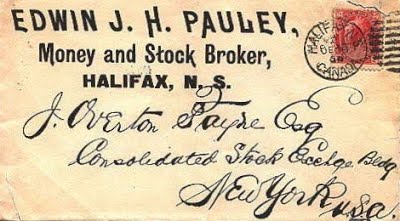
On March 20, 1918, he married his second wife Martha "Nellie" Ellen Collinge Metcalfe (1880-1934), at Cameron, Pennsylvania. The couple soon moved to 77 Bedford Avenue, Buffalo, New York.
In 1919 they moved to Atlantic City, New Jersey,
On August 26, 1919, he filed a U. S. patent on Gasfix, a gasoline purifier and carbon preventive.
He died on July 31, 1934.
To read the complete article, see:
PAULEY, EDWIN JAMES HARDY
(http://www.numismaticmall.com/numismaticmall-com/pauley-edwin-james-hardy)
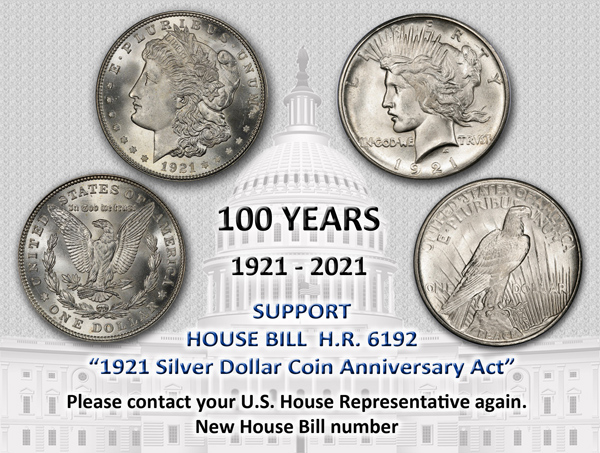
STEPHEN ALBUM RARE COINS AUCTION 37 RESULTS
Here's the post-sale press release for the Stephen Album Rare Coins Auction 37. For researchers and bibliophiles, the sale included selections from the H. F. Bowker Numismatic Library. Great prices all around. See their web site for more information. -Editor
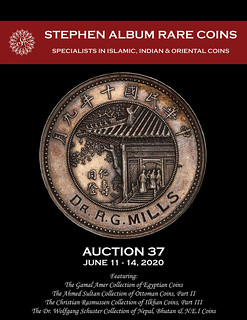 Spirited bidding was seen at Stephen Album Rare Coins' Auction 37, which was held June 11-14, 2020 at their offices in Santa Rosa, CA. The strength of the coin market was shown as high prices were seen throughout the sale and 96.5% of the lots in the floor sale were sold. The total price realized was $1.85 million USD (including buyer's fees), a new record for the growing auction house. Pre-sale estimate for the auction was $1.20 million USD.
Spirited bidding was seen at Stephen Album Rare Coins' Auction 37, which was held June 11-14, 2020 at their offices in Santa Rosa, CA. The strength of the coin market was shown as high prices were seen throughout the sale and 96.5% of the lots in the floor sale were sold. The total price realized was $1.85 million USD (including buyer's fees), a new record for the growing auction house. Pre-sale estimate for the auction was $1.20 million USD.
The most exciting moment came when a Chinese silver "Pavilion" dollar sold for an astounding price of $130,900. This is more than three times higher than previous sales records for a Pavilion dollar (based on auction records available on CoinArchives Pro). The reason for the record breaking price is that this piece was engraved for Dr. Ralph Garfield Mills (1881-1944) of Lincoln, Illinois.
Dr. Mills was Professor of Pathology and Director of Research at Severance Medical College (now Severance Hospital of the Yonsei University Health System), from 1911 until 1918 in Seoul, Korea. According to the Johns Hopkins University circular "Annual Report of the Johns Hopkins University 1913-14" published in Baltimore, Maryland in 1915, Dr. R. G. Mills, "an instructor in Pathology and Surgery resigned to become Professor of Pathology and Surgery in the new Peking Union Medical College in Peking", China in 1918. He was also listed as the Vice-President of the Korea Branch of the Royal Asiatic Society in Seoul in 1916. In 1923 Dr. R. G. Mills, was again head of the department of pathology of the Peking Union Medical College and he wrote about the previous year in which "two of the contending war lords whose forces were clashing near Peking retired from the sanguinary scene of their conflict leaving several hundred wounded soldiers in an old temple. The Peking Union Medical College authorities commandeered all the suitable vehicles that could be found and brought the wounded men into the great city hospital." Dr. Ralph G. Mills and his wife, Ethel, served as missionaries in Korea and China.
A few highlights from the auction follow (prices include buyer's fees):

LOT 1448: CHINA: REPUBLIC: silver dollar, Tientsin mint, year 10 (1921), Kann-676a, L&M-957, Hsu Shih-chang "Pavilion" type, plain edge without bottom legend variety, hand engraved DR. R. G. MILLS on reverse, PCGS graded AU details, RR. Estimated at $5,000 - 7,000 (Realized $130,900)
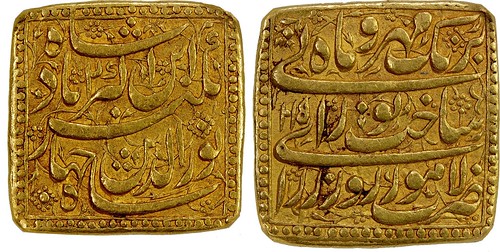
LOT 1066: INDIA: MUGHAL EMPIRE: Jahangir, 1605-1628, gold square heavy mohur, Lahore, AH1015 year 2, KM-184.1, BMC-293 (1015 year 1) & 294 (1016 year 3), special presentation type from the early part of Jahangir's reign, obverse legend his full name & patronymic shah nur al-din jahangir ebn akbar padshah, and the regnal year "2"; reverse legend ruy-e zar-ra sakht nurani be-rang-e mehr o mah, "he made the face of money to shine with hues of the sun and moon", and the mint formula zarb lahore, NGC graded AU55. Estimated at $14,000 - 16,000 (Realized $26,180)

LOT 1462: CHINA: CHIHLI: Kuang Hsu, 1875-1908, silver dollar, Peiyang Arsenal mint, Tientsin, year 24 (1898), Y-65.2, L&M-449, dragon eyes in relief, a superb quality example with bright white original mint luster, a superb example! PCGS graded MS63. Estimated at $15,000 - 20,000 (Realized $26,180)
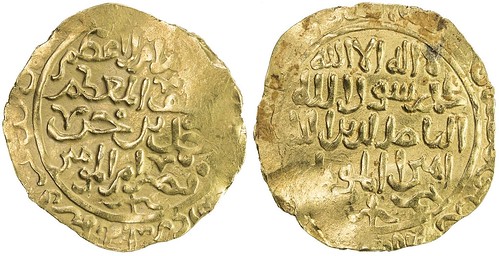
LOT 816: MEDIEVAL ISLAMIC: ASSASSINS AT ALAMUT: Muhammad III, 1221-1254, gold dinar (2.56g), MM, AH618, A-D1920, dated in the year of his accession, citing the Abbasid caliph al-Nasir li-din Allah, slightly uneven surfaces, unpublished and almost certainly unique and of great historic importance, VF-EF, RRRR. Estimated at $4,500 - 5,500 (Realized $16,660)

LOT 1757: WORLD: THAILAND: Rama IV, 1851-1868, gold stamped fuang, ND (ca. 1856), Cr-170, Krisnadaolarn & Mihailovs, p. 150, plate F07, upper left, stamped with four marks: chakra, mongkut, and phra tao (twice), grained right on the edge (derived from coins of the Indian Presidencies), EF, RRRR. Estimated at $2,000 - 3,000 (Realized $9,520)
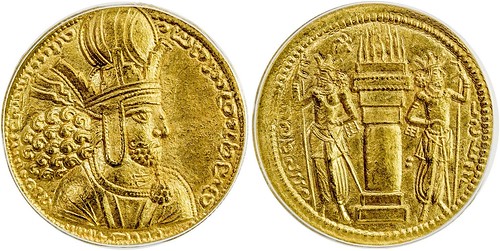
LOT 102: ANCIENTS: SASANIAN KINGDOM: Shahpur (Sabuhr) I, 241-272, gold dinar (7.30g), Ctesiphon, G-21, diademed bust of Shapur right, wearing mural crown with korymbos // fire altar flanked by two attendants, each looking away from the fire and wearing mural crowns, two pellets right of the altar, lustrous and well struck example! ANACS graded MS64. Estimated at $3,500 -4,000 (Realized $5,355)
 LOT 3689: NUMISMATIC LITERATURE: Schroeder, Albert, Annam Études Numismatiques, Paris, 1905, original printing, 651 pages, 111 fine phototype plates, in two volumes, one of text and one of plates, contemporary red cloth binding, original paper covers with the text volume hardbound, the standard French-language work on Vietnamese cash, silver, and gold and still the best work on gold and silver coinage, now extremely rare, RR, ex. H. F. Bowker Numismatic Library. Estimated at $300 – 500. (Realized $4,760)
LOT 3689: NUMISMATIC LITERATURE: Schroeder, Albert, Annam Études Numismatiques, Paris, 1905, original printing, 651 pages, 111 fine phototype plates, in two volumes, one of text and one of plates, contemporary red cloth binding, original paper covers with the text volume hardbound, the standard French-language work on Vietnamese cash, silver, and gold and still the best work on gold and silver coinage, now extremely rare, RR, ex. H. F. Bowker Numismatic Library. Estimated at $300 – 500. (Realized $4,760)
CFO Paul Montz was happy with the results. "We were curious to see how this auction would do, with all the changes the pandemic has forced on the industry. We were pleased to see that the market appears to be stronger than ever. This strength carried throughout the auction in all categories."
The firm is now inviting consignments for its Auction 38 on September 10-12, 2020. For more information see www.stevealbum.com
To read the earlier E-Sylum article, see:
STEPHEN ALBUM RARE COINS AUCTION 37
(https://www.coinbooks.org/v23/esylum_v23n20a31.html)

ARCHIVES INTERNATIONAL AUCTION 60
Last week we previewed several selections from the July 2020 Archives International sale; here's the full press release. -Editor
U.S., CHINESE & WORLDWIDE BANKNOTES, SCRIPOPHILY, COINS AND HISTORIC EPHEMERA TO BE OFFERED AT PUBLIC AUCTION ON TUESDAY & WEDNESDAY JULY 7TH & 8TH, 2020
The auction will be held by Archives International Auctions at their offices in River Edge, N.J.
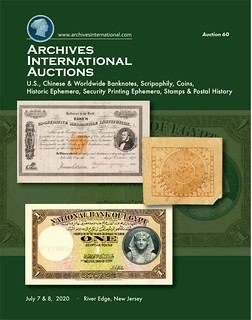 The July 7th and 8th, 2020 auction by Archives International Auctions will consist of 1523 lots offered over 2 days beginning on July 7th with 719 lots of Worldwide & Chinese Banknotes, Chinese Scripophily and World Coins. The second day, on July 8th features 804 lots of U.S. & World Scripophily, U.S. Banknotes, Security Printing Ephemera and Historic Ephemera and Stamps and Postal History.
The July 7th and 8th, 2020 auction by Archives International Auctions will consist of 1523 lots offered over 2 days beginning on July 7th with 719 lots of Worldwide & Chinese Banknotes, Chinese Scripophily and World Coins. The second day, on July 8th features 804 lots of U.S. & World Scripophily, U.S. Banknotes, Security Printing Ephemera and Historic Ephemera and Stamps and Postal History.
"During this difficult time period for our country and the world, we are striving to offer our clients and friends items of historical and collecting interest that have been off the market for decades and should command serious collector and dealer interest as well as add a small amount of enjoyment to everyone's lives", stated Dr. Robert Schwartz, President of Archives International Auctions. "We have included a wide variety or rare, interesting and desirable material to enhance the collections of every level of collector and dealer".
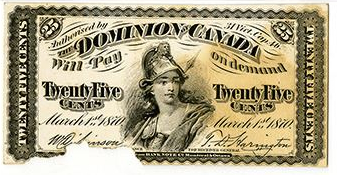
Dominion of Canada, 1870 Face Proof Banknote, Possibly Unique
Included in the first session on Tuesday, July 7th, are consignments from numerous estates and longtime collections with many items having never been offered previously at auction. China features over 150 lots with many high-grade notes, some possibly the finest known. Auction highlights include a Ta Ch'ing Government Bank, ca.1911, Shansi Issue, Unlisted Denomination Rarity banknote; a Dominion of Canada, 1870 Face Proof Banknote, 25 Cents, P-8ap DC-1cP1, Black without underprint, possibly unique and the only example of this variety graded by PMG; a National Bank of Egypt, ND (ca.1930) Color Trial Uniface Front & Back Proof rarity; a British Armed Forces Special Voucher. 2nd Series, ND (1948). Specimen Banknote, set of 7 different specimens, rarely seen in this format; a $5, Hong Kong, Chartered Bank of India, Australia & China, 1940, Issue in PMG VF 35 EPQ, rarely seen this nice; an Iraq National Bank, 1947 (ND 1955) One Quarter Dinar, P-37 in high Grade, with only 2 other notes grading higher; and a 1904, Korea, First National Bank of Japan. 1 Yen, P-4b. We are also pleased to offer an extremely Rare Kingdom of Hawaii, Wailuku Female Seminary, (ND 1844) Hapaumi (1/10th) issued scrip note rarity with this example never having been offered previously at auction; an extremely rare and very possibly the highest graded example of the Arabian American Oil Co. "ARAMCO", ND (ca.1940-50's). "Senior Staff Coupon" Specimen Scrip Note, one of 2 examples that are being offered at auction from an old estate; and hundreds of issued, specimen and proof banknotes, coins, and scripophily pieces.

Zion's Co-operative Mercantile Institution Certificate
Day 2, scheduled for Wednesday, July 8th, will consist of 804 lots of U.S. and World scripophily highlighted by 1871, Utah Territory, Zion's Co-operative Mercantile Institution, a historic Mormon company stock certificate signed by Brigham Young as president and with a U.S. Imprinted Revenue RN-T4; an extremely rare uncut block of 4 specimen U.S. Government Liberty Loan Bond, 1917, 3 1/2% Gold Bond Participation Certificates with a denomination of $10 each; a Berkshire Hathaway Inc. 1973 (1996) Specimen Stock Certificate destined to be a modern rarity; a Unique 1863, New York Specimen bond rarity, the Albany and Susquehanna Railroad Company; and an extremely rare U.S., 1946 Armed Forces Leave Bond Rarity, and over 200 lots of rare and desirable Railroad bonds and shares; over 90 lots of mining, oil & gas and navigation stocks and bonds. Additional highlights include 29 lots of rare Mexico Railroad bonds and shares, very possibly the largest and finest offering of these rare certificates ever with many unique in the ABN Archives and offered for the first time; An 1825, Spanish, Real Compania de Guadalajara, Loan,£100 Sterling I/U Bond; and hundreds of exceptional stocks and bonds from automobiles to mining to railroads with every topic in between that should appeal to all levels of collectors and dealers.

1850 California Gold Rush Era Bill of Exchange
The U.S. section includes 10 lots of Colonial and Continental Currency highlighted by a Continental Currency, February 26, 1777, $8 Fr#CC-61 Issued Banknote; a U.S. 1899, $1 Silver Certificate, Fr#232 graded PMG Gem Uncirculated 66; a U.S. Gold Certificate, $20, 1882, Fr#1178 in VF condition; a historic 1850 California Gold Rush Era Bill of Exchange issued August 9th, 1850, 1 month before California was granted statehood and the earliest California Exchange we have ever offered; 2 different historic Jay Gould autographed Railroad passes for the Erie Railroad, both with rare U.S. Imprinted Revenues on the back; over 80 lots of Obsolete banknotes with may desirable notes that are sure to attract interest; a large assortment of Security Printing Ephemera and Historic Documents and Ephemera is highlighted by possibly the largest assortment of Whaling Vignette Die Proofs used on a variety of U.S. Obsolete Banknotes, Fiscal Documents and Letterheads, ca. 1830-1870's by a number of major U.S. Security Printers and American Bank Note Company predecessor companies. Additional highlights include an original 4 subject 1860's Obsolete printing plate from the City Bank (of Augusta, Georgia), $1-1-1-2; and numerous security printed items as well as national banknotes, small and large type notes, college currency and related items. The sale ends with 32 lots of U.S. and world Stamps and Postal History.
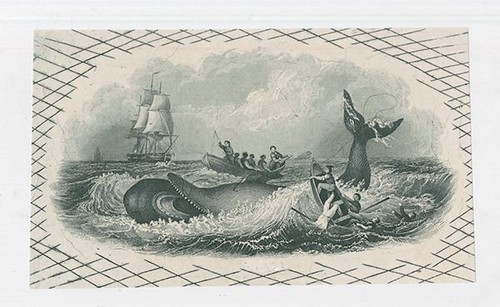
Whaling Proof Vignette
Previews will be limited and by appointment only and we will be observing strict safety precautions including the wearing of masks and observing social distancing to protect our team as well as our guests. We will do our best to accommodate anyone who desires additional information and photographs. For questions, please call 201-944-4800 or email info@archivesinternational.com.
The online catalog for the July 7th and 8th sale is on Archives International Auctions' website and can be viewed via the Archives International live bidding platform. It can also be viewed as a Virtual Catalog or downloadable Sale 60 .pdf on our website. To pre-register for live internet bidding, log on to the Archives International Auctions website, at www.ArchivesInternational.com.
Archives International is now working on their late Summer and Fall 2020 auctions and are seeking quality consignments for future auctions or outright purchase including U.S. and worldwide banknotes, coins, stocks, bonds, stamps, postal history, historic ephemera, and autographs. To sell or consign one piece or an entire collection, please call AIA at (201) 944-4800; or e-mail them at info@archivesinternational.com.
You may also write to Archives International Auctions, at 1060 Main Street, River Edge, NJ 07661, U.S.A. To learn more about Archives International Auctions and the auctions planned for July 7th and 8th, 2020, log on to www.ArchivesInternational.com.
To read the earlier E-Sylum article, see:
ARCHIVES INTERNATIONAL AUCTION 60 SELECTIONS
(https://www.coinbooks.org/v23/esylum_v23n25a23.html)
THE BOOK BAZARRE
NUMISMATIC NUGGETS: JUNE 28, 2020
Here's a selection of interesting or unusual items I came across in the marketplace this week. Tell us what you think of some of these. -Editor
1755 French Colonies Sou Marque
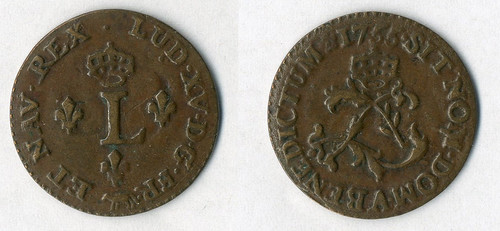
French Colonies in America, sou marque, 1755, a probable contemporary counterfeit, GVF
Howard Daniel pointed out this one. He adds: "There are also some US coins from lots 192-201 with the last being a Hard Times Token from 1837." -Editor
To read the complete lot description, see:
French Colonies in America, sou marque, 1755, a probable con...
(https://www.easyliveauction.com/catalogue/lot/
6faf1b17dd0a7bae22928b6175c343cf/0af8d24542e81eb9357e7ef448a6646f/
online-auction-of-british-and-world-coins-lot-184/)
1838 Coronation of Victoria Medal
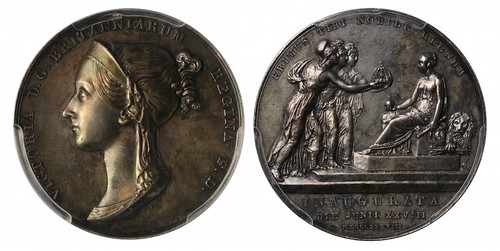
Coronation of Victoria 1838, the official silver medal by Benedetto Pistrucci, bust left, VICTORIA D.G. BRITANNIARUM REGINA F.D. rev Britannia, Hibernia and Scotia offer the crown to Victoria, ERIMUS TIBI NOBILE REGNUM, in exergue, INAUGURATA DIE JUNII XXVIII MDCCCXXXVIII, 36mm (BHM 1801; Eimer 1315). In PCGS holder graded SP58.
From the Sovereign Rarities site. -Editor
To read the complete item description, see:
CORONATION OF VICTORIA, 1838.
(https://www.sovr.co.uk/coronation-of-victoria-1838-em15225.html)
Russian Imperial Badge
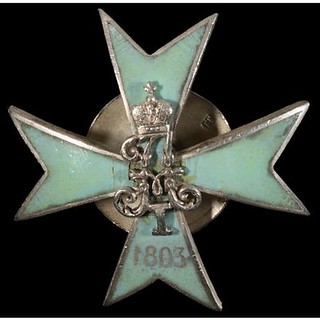
Russian Imperial Badge, 6 Libau Infantry Regiment, 1911; Silver Maltese Cross with pale blue enamel, Czar Alexander I Cypher with Crown, date of 1803. Hallmarked for Moscow, 1908-1926, with unknown assayers mark, 84 zlotny purity. 1 5/8".
Provenance
From the Estate of Rosemarie Wolfe, Cape Elizabeth, ME
To read the complete lot description, see:
WWI RUSSIAN MILITARY MEDAL IN ENAMELED SILVER
(https://live.thomastonauction.com/lots/view/1-33VPZC/wwi-russian-military-medal-in-enameled-silver)

CHARON'S OBOLS FOUND IN CHILDREN'S GRAVES
Here's an article about the use of "Charon's Obols", coins buried with the dead. Found via The Explorator newsletter. To subscribe to Explorator, send a blank email message to: explorator+subscribe@groups.io. -Editor

The coins, also known as boratynki, belonged to the era of Sigismund III Vasa, king of Poland (1587-1632) and John II Casimir (1648-1668)
In an upsetting discovery, over 100 remains of children were unearthed in the Jezowe village of Poland on June 23. According to the archaeologists, the mass grave is of 16th-century origin as some of the remains had coins in their mouth that belonged to that period.
The discovery was entirely unexpected. During the construction of S19 two-lane motorway as a part of the Via Carpatia project, workers found the remains and informed the archaeologists of Gminne Centrum Kultury w Jezowem. So far, 115 bodies have been unearthed from the sandy ground and about 80 percent of them were of children.
Another interesting point that archaeologists noticed was that there were no coffin handles, nails or buttons. According to Katarzyna Oleszek, the archaeologist who is working at the site, said that it indicated a poor community which buried the children.
Charon's Obol
However, the startling discovery was that some bodies had coins in their mouths. Placing coins in mouths of dead bodies is an ancient ritual that dates back to the pre-Christian era. The ritual, which is called Charon's obol or obols of the dead, was performed in ancient Greece and Rome. The obol was considered to be a payment or bribe for the Charon or the ferryman who carried the souls to the afterlife. It was believed that a river divided the worlds of the living and the dead.
"It's certainly a sign of their beliefs. The coins are called obols of the dead or Charon's obol. It is an old, pre-Christian tradition. But it's been cultivated for a long time, even as late as the nineteenth century, it was practised by Pope Pius IX," Oleszek told The First News.
The tradition of placing coins dates back to fifth century BC when Greece started performing it as soon as the country started using coins. It appeared throughout the Roman Empire into fifth century AD including in the Iberian Peninsula, Britain, Poland and in Anglo-Saxon graves. In 2001, archaeologists discovered some of the oldest coins from Mediterranean tombs. They found 77 such coins from 33 tombs.
While Charon's obol was a common ritual of that generation, the placement of the coins varied throughout Europe. In some tombs, coins were found placed on eyes while in some cases they were placed on the body and feet. The tradition, according to some archaeologists, dates back to even pre-coin era when any object was used as a Charon's fee.
16th Century Burial Site
In the case of Jezowe burial site, the coins weren't that old. Some coins belonged to the kingdom of Sigismund III Vasa, who was the ruler of Poland from 1587 to 1632. They also found coins, also known as Boratynka, which belonged to the kingdom of John II Casimir between 1648 to 1668.
To read the complete article, see:
Archaeologists Unearth Mass Grave of Over 100 Children in Poland
(https://www.ibtimes.sg/archaeologists-unearth-mass-grave-over-100-children-poland-47572)
PLANTERS BANK COUNTERMARK FOUND AT BATTLE SITE
This Heritage Auctions press release describes a great coin in their upcoming August ANA sale. -Editor
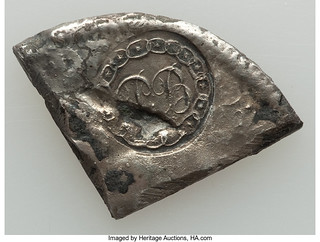
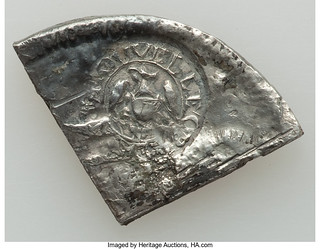
Scarce Emergency Coinage Piece Discovered On Battle Site
It may be hard to imagine today, but there were times in American history when small-denomination coins such as quarters and cents were in very short supply. With a lack of smaller denominations to make change, it was very difficult for commerce to operate normally. It was not as simple as just going to the store with $1 and knowing that you would easily get the change you needed for a smaller purchase--the store (or you) might not have the change necessary! This resulted in the production of Cent-sized tokens and other emergency measures, such as cutting down larger coins.
In particular, cut-down silver coins were common to see in circulation in the Colonial period and the early 1800s. While the US Mint eventually formed and started making Half Cents, Cents, and other coins in the 1790s, many coins were in short supply. Cut down coins started their life as a larger piece, such as Spanish 8 Reales (a silver dollar-sized coin that was often used in the American colonies in the 1700s and 1800s). These coins were cut into segments to make change.
At times, local authorities would stamp their mark onto these cut-down coins. The Planters Bank is one such group, and their pieces are popular among collectors today. The Planters Bank counterstamped their mark onto both sides of these silver coin segments to add an air of authority.
As Heritage Auctions catalogers explain, "Circulating small change was in critically short supply throughout the South in the early 1800s, when cut ‘two bits' pieces served as a stop-gap solution, taking the place of U.S. quarter dollars. In particular, Planters Bank of New Orleans was in dire need of quarters."
Existing crenate (scalloped) segments cut from 8 reales were removed from circulation and verified by the bank as an anti-counterfeiting measure. Circular countermarks were struck on both the obverse and reverse - an elaborate script P.B. within a chain-link circle on the obverse, and NOUVELLE ORLEANS surrounding an eagle on the reverse (eagle's head under V). In subsequent years, Planters Bank supplied large shipments of bullion to the Philadelphia Mint in exchange for freshly minted federal quarters dated 1815 and 1825."
One such piece was discovered by a Heritage client, who enjoys metal detecting. He found it in 1991 on land where the Battle of New Orleans had taken place in 1815! It was discovered alongside musket balls and other remnants of the battle.
While we may never know if the cut segment with the Planter's Bank mark was originally carried by a British soldier or the Americans, this piece has great provenance given its discovery site. It has been consigned to the August ANA US Coin Auction #1318 and should be popular with coin as well as historical collectors! Similar pieces have sold in the $5,000 and up range in the past, but most of those do not have such a great story.
See the piece for yourself here:
https://coins.ha.com/itm/other/other-collectibles/coming-soon-/p/1318-66001.s
To read about the battle on Wikipedia, see:
Battle of New Orleans
(https://en.wikipedia.org/wiki/Battle_of_New_Orleans)
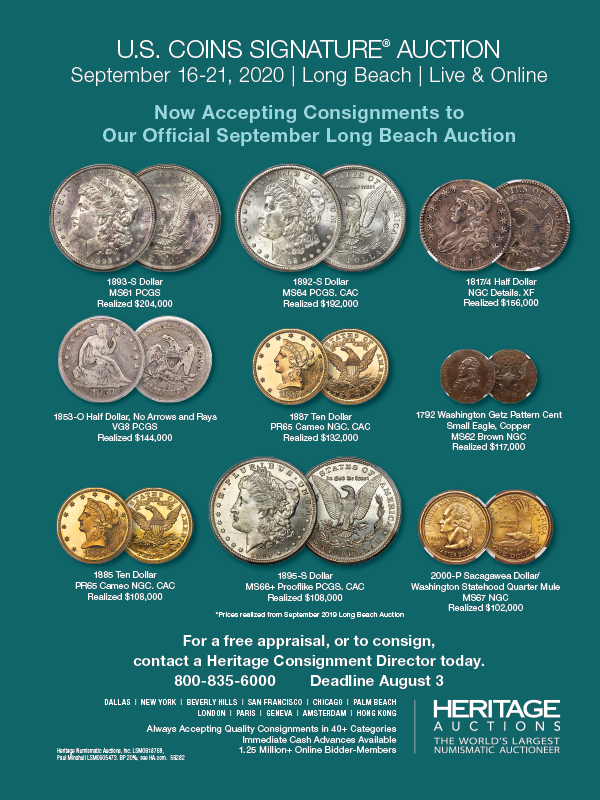
THE CALDWELL LORD'S PRAYER CIVIL WAR TOKEN
In the Summer 2020 issue of the Civil War Token Journal from the Civil War Token Society, Bill Groom published an article about an unusual engraved U.S. coin. With permission, we're republishing it here. Thanks! -Editor
An Engraved Civil War Token!?
by Bill Groom
Like many a collector of die-struck Civil War tokens, over time, this writer cultivated a fascination for other forms of exonumia and emergency currency from that historic era. Then followed scrip, north and south; especially so, Sterling Rachootin's so-called scripmates. Sutler tokens took center stage for a time, as did encased postage. I've been fortunate to find and attribute a few Civil War era counterstamped coins, too. After all that variety, imagine my surprise at finding and acquiring the below coin-turned-token, an engraved Civil War era piece! At first glance, I thought it to simply be a love token ...
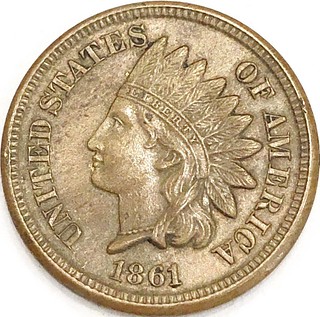
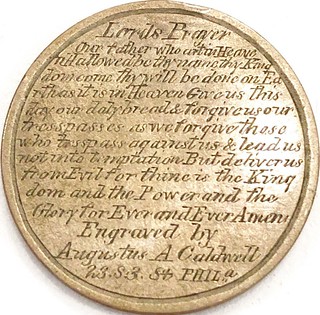
This high grade of this 1861 Indian cent, boasting four, full diamonds on the ribbon, caused me to initially suspect the coin may have been newly minted when the reverse was planed down and engraved. What really excited me though was the end signature: Engraved by / Augustus A. Caldwell / 23.S.3.St PHILa. This most skillfully executed work of engraved exonumia was, as such, unlike any other piece I'd ever owned. In effect, it's comparable to die-struck store cards, displaying both the work and ability of the issuer.
Obviously, this coin was engraved in 1861 or later. Caldwell's address would be key to dating this issue. Fortunately, there's a super website that has a fairly comprehensive run of Philadelphia City directories at Internet Archive, from the late 1790's to 1867:
https://archive.org/search.php?query=Philadelphia%20city%20directory%20AND%20mediatype%3Atexts
An image of Caldwell's listing in McElroy's directory for 1861 appears below. It's the only year he's listed, working at this address; matching that engraved on the token. Note, the address, 23 S 3d, matches that of Edwin Vallette. whose engraving office was also listed in McElroy's 1861 directory; this, as illustrated in the below image to the right.

It's unknown whether Caldwell was an apprentice to Vallette, simply an employee or an independent engraver. Vallette's obituary was published in January of 1863 ....
VALLETTE - On the 23rd instant. Mr. EDWIN VALLETTE, died in the
70th year of his age. The relatives and friends of the family
are respectfully invited to attend the funeral on Monday after-
noon, 26th inst.,
at 2 o'clock from his late residence, No. 947
North Twelfth Street.
Augustus A. Caldwell was absent in Philadelphia City directories prior to 1861, the year of his first listing. In 1859, one John Caldwell was listed as the proprietor of a hotel at "SE 2d & Shippen" which was occasionally listed as "701 S 2d." John may have been father to Augustus or else otherwise related to John. It's noted in the following directory listings that Augustus was living at John's hotel from 1861-63. One Eugene Caldwell, perhaps a younger brother, is also listed at the hotel; this, only in 1862 and 1863.
1859 Caldwell, John …. SE 2d & Shippen …. hotel (absent, Augustus)
1860 Caldwell, John …. SE 2d & Shippen …. restaurant (absent, Augustus)
1861 Caldwell, Augustus A., engraver, 23 S 3d h SE 2d & Shippen
" Caldwell, John, hotel, SE 2d & Shippen
" Vallette, Edwin, engraving office, 23 S 3d h 606 N 11th (same work address as Augustus)
1862 Caldwell, Augustus A., engraver, 701 S 2d (John Caldwell's tavern/hotel/restaurant)
" Caldwell, Eugene, trunkmaker, 701 S 2d (John Caldwell's tavern/hotel/restaurant)
" Caldwell, John, tavern, 701 S 2d
" Vallette, E., engraver, 622 Market h 1432 Marshall (Vallette moved from 1861 office)
1863 Caldwell, A.A., engraver, 701 S 2d (John Caldwell's tavern/hotel/restaurant)
" Caldwell, Eugene, trunkmaker, 701 S 2d (John Caldwell's tavern/hotel/restaurant)
" Caldwell, John, hotel 701 S 2d
1863 Edwin Vallette died in January. (N.B. - there's afterwards listed an "E. Valette, engraver")
1864 absent .... Augustus, Eugene & John Caldwell
1865 Caldwell, Augustus A., engraver, 130 N 5th , h 404 Catherine
1866 Caldwell, Augustus A., engraver, 130 N 5th, h 404 Catherine
1867 absent .... Augustus, Eugene & John Caldwell
Beyond the 1866 Philadelphia directory listing, this writer found scant mention of an "A.A. Caldwell" in Chicago, circa 1880, and a NY City listing of an "A.A. Caldwell" at 39 Cortlandt Street in 1897.
SUMMARY:
Philadelphia directory evidence clearly proves that the subject token was created in 1861. This is the only year that engraver Augustus A. Caldwell was listed as working at 23 South Third Street, the address cited on the token. Subsequent directory listings, ranging from 1862 through 1866 illustrate that Augustus continued to pursue his profession. Might the ongoing war have caused him to be absent from Philadelphia in 1864? Might he have temporarily vacated Philadelphia in 1864 in order to assist likely family members, John and Eugene, in relocating that year? As often happens when researching tokens, questions abound.
This writer can but surmise that this most well preserved subject piece was used as a calling card by Augustus. It clearly attests to his talent as an engraver. His token carries a profound message for its time in history, the Lord's Prayer. It's a message that speaks to the character of this engraver, recalling words often uttered during times of great strife.
A very interesting and intriguing piece. Click on the coin image to see a larger version on our Flickr archive. -Editor
Bill adds:
"This is one of the most intriguing pieces of exonumia to ever come my way. Wish I could've found more info on Mr. Caldwell. Perhaps I will, in time, as internet resources continue to materialize."
For more information on the Civil War Token Society, see:
http://www.cwtsociety.com/

HOWARD HUGHES MEDALS OFFERED
Profiles in History will be auctioning medals from the personal collection of Howard Hughes next month. -Editor
Howard Hughes Congressional Gold Medal

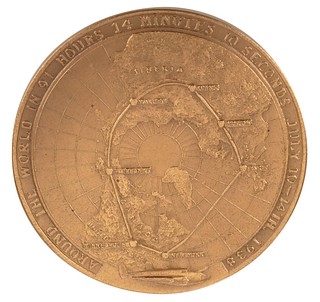
 Howard Hughes personal 1939 Congressional Gold Medal recognizing his achievements in advancing the science of aviation. The Congressional Gold Medal for Howard R. Hughes was approved by the U.S. Congress August 7, 1939 for recognition of his achievements in "advancing the science of aviation and thus bringing great credit to his country throughout the world." Measuring 2.75 in. diameter, the medal's obverse depicts a profile portrait of Hughes with inscription "Howard R. Hughes Medal of the Congress Act of Aug.7, 1939 United States of America"; the reverse captures a rendition of the global route Hughes flew his Lockheed 14 Super Electra twin-engine monoplane for his record-setting round-the-world flight with the circumscribed text "Around the World In 91 Hours 14 Minutes 10 Seconds July 10-14th, 1938".
Howard Hughes personal 1939 Congressional Gold Medal recognizing his achievements in advancing the science of aviation. The Congressional Gold Medal for Howard R. Hughes was approved by the U.S. Congress August 7, 1939 for recognition of his achievements in "advancing the science of aviation and thus bringing great credit to his country throughout the world." Measuring 2.75 in. diameter, the medal's obverse depicts a profile portrait of Hughes with inscription "Howard R. Hughes Medal of the Congress Act of Aug.7, 1939 United States of America"; the reverse captures a rendition of the global route Hughes flew his Lockheed 14 Super Electra twin-engine monoplane for his record-setting round-the-world flight with the circumscribed text "Around the World In 91 Hours 14 Minutes 10 Seconds July 10-14th, 1938".
Hughes' medal was ready for presentation in 1941, but Hughes never traveled to Washington, D.C. to formally receive the medal from Franklin D. Roosevelt. Hughes' Congressional Gold Medal was mailed to him years later during President Truman's administration. Medal comes with its original blue, leather-covered presentation case. In fine condition. From the personal collection of Howard Hughes. $4,000 - $6,000
This is a huge opportunity for medal collectors. The Congressional Gold Medal is a rare honor since um, it literally takes an Act of Congress to get one. These rarely come up for sale. -Editor
For more information, or to bid, see:
Howard Hughes personal 1939 Congressional Gold Medal recognizing his achievements in aviation.
(https://www.icollector.com/Howard-Hughes-personal-1939-Congressional-Gold-Medal-recognizing-his-achievements-in-aviation_i37622381)
Amelia Earhart Medal
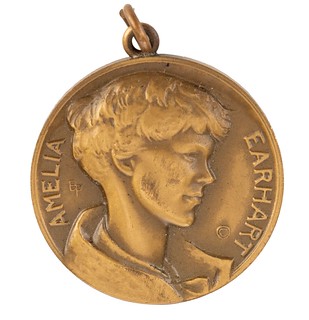
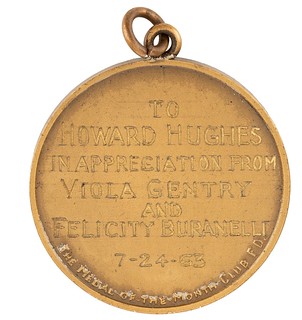
Howard Hughes personal Amelia Earhart medal presented by aviator Viola Gentry and artist Felicity Buranelli. (1941/1963) A 1.25 in. diameter medal depicting a relief profile portrait of legendary pilot Amelia Earhart with her name in relief lettering. Designed by sculptor Felicity Buranelli for the Medal of the Month Club and issued in 1941. The verso is engraved from the sculptor and pioneering female aviator Viola Gentry to Howard Hughes, "To Howard Hughes In Appreciation From Viola Gentry and Felicity Buranelli 7-24-63".
Gentry set the first endurance non-refueling record for women, flying 8 hours, 6 minutes, and 37 seconds. Buranelli was connected to the word of aviation through her brother, Vincent J. Burnelli [he dropped the "a" from his name], an aeronautics engineer who made significant contributions in the areas of lifting body and flying wing. She created numerous medal designs honoring individuals who helped mankind conquer the skies. Light handling. In generally very good condition. From the personal collection of Howard Hughes. $300 - $500
For more information, or to bid, see:
Howard Hughes personal Amelia Earhart medal presented by aviator Viola Gentry & artist Buranelli.
(https://www.icollector.com/Howard-Hughes-personal-Amelia-Earhart-medal-presented-by-aviator-Viola-Gentry-artist-Buranelli_i37622406)
Spruce Goose Medal


Howard Hughes personal Famous Flights medallion commemorating the Nov. 2, 1947 test of the Flying Boat. (ca. 1969) Famous Flights series metal coin medalion. The front features a relief image of the Hughes H-4 Hercules "Flying Boat" (Spruce Goose) against an ocean backdrop. The verso bears relief text, "Famous Flights First flight of the giant Hughes flying boat at San Pedro, Calif. Powered by eight 3000 h.p. P&W engines and with a wingspan of 320 ft. it was the world's largest airplane. Pilot: Howard R. Hughes Nov. 2, 1947" and pilot wings and garland graphics. Measures 1.5 in. diameter.
Presented in the brown felted 2.25 x 2.75 x 1.5 in. jewelry box. The H-4 would become the plane with which Howard Hughes was most closely associated in the public mind. Intended as a troop transport for use in World War II, the Hercules wasn't completed until 1947 and flew only once. Because of wartime restrictions on aluminum, the plane was constructed entirely of wood-mostly birch-leading the media to dub it the "Spruce Goose". The H-4 remains the largest flying boat ever built and has the second longest wingspan (320 ft. 11 in.) of any plane ever flown. Exhibiting some edge tarnish, light soiling, and faint pitting. In very good condition. From the personal collection of Howard Hughes. $300 - $500
For more information, or to bid, see:
Howard Hughes personal Famous Flights medallion for the Nov. 2, 1947 test of the Flying Boat.
(https://www.icollector.com/Howard-Hughes-personal-Famous-Flights-medallion-for-the-Nov-2-1947-test-of-the-Flying-Boat_i37622392)
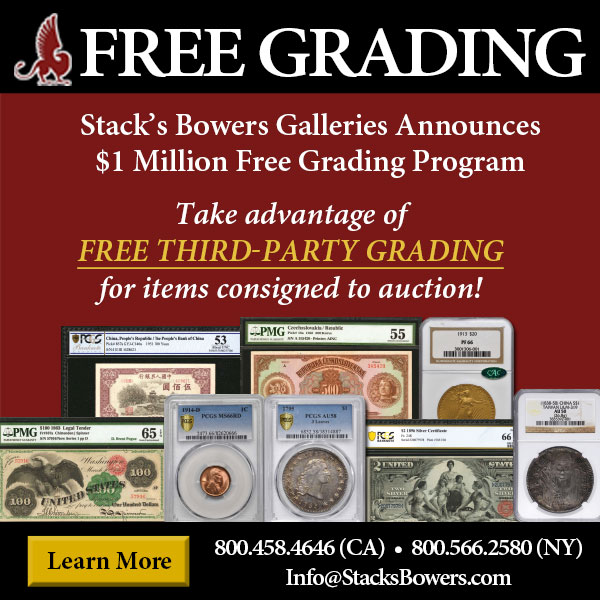
2021 BULLION COIN REVERSE DESIGNS RECOMMENDED
Dennis Tucker submitted this article on CCAC recommendations for new reverse designs for the 2021 bullion coins. Thanks! -Editor
CCAC Recommends New Reverse Designs for 2021 Gold and Silver Bullion Coins
The Citizens Coinage Advisory Committee convened by telephone in administrative and public meetings on Tuesday, June 23, 2020. United States Mint Director David J. Ryder connected to the meetings from Mint headquarters on Ninth Street in Washington. In a sign of the times, other Mint officers and staff called in from their home offices, and all eleven CCAC members participated by Internet and phone.
The public meeting focused on several important coin and medal programs that will roll out over the next year or so. The biggest agenda item by far involved design changes for the reverses of the American Eagle silver and gold bullion coins.
Collectors and investors have purchased hundreds of millions of these precious-metal coins since the United States' hugely popular bullion-coin program started in 1986. The silver and gold pieces are minted as commodities—a convenient way to invest in government-backed bullion—and also as collectibles, with Proofs and other special formats available for hobbyists and gift-givers.

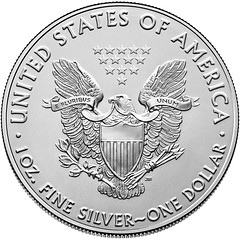
American Silver Eagle design from 1986 to 2020
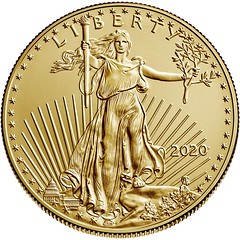

American Gold Eagle design from 1986 to 2020
Significant Changes Coming for 2021
Members of the CCAC—a congressionally established public committee that advises the Secretary of the Treasury on coinage and medal themes and designs—expressed their sense of the importance of their proceedings.
Donald Scarinci, the committee's longest-serving member, said, "This is one of the most exciting things we've been called upon to do." He described the gold and silver American Eagles as two of the nation's "most iconic coins" and said he was humbled by the design review process.
Member Sam Gill echoed the sentiment, calling the American Eagles the most challenging coins the committee has worked on since he joined, "and a responsibility."
Member Dean Kotlowski noted that the designs must stand the test of time. The new motifs will likely occupy the nation's bullion coins for at least the next 25 years. Member Jeanne Stevens-Sollman agreed, urging the committee to "look at longevity" and saying that the chosen designs must be "fabulous."



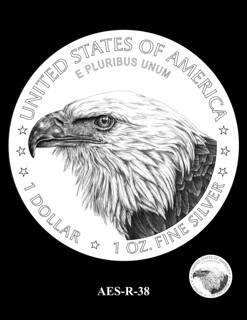
Design recommendations
High Praise for the Mint's Artists
Design candidates were submitted by artists of the Mint's Philadelphia-based staff, as well as from its Artistic Infusion Program, which involves talent from around the country.
Member Robert Hoge said he was impressed with the beauty of the proposals, which numbered 39 in total. The committee as a whole had similar praise for the artists. Some of the adjectives used in the course of the public meeting were compelling, excellent, extraordinary, phenomenal, powerful, stunning, emblematic, majestic, innovative, spectacular, and refreshing.
"I like this package in total," said member Michael Moran. Former committee chair Mary N. Lannin called the portfolio "enormous" and said, "The ones we don't use, need to be kept somewhere" for use on future coins or medals.
A New Reverse for the American Gold Eagle
Since 1986, the obverse of the American Gold Eagle has featured a slightly modernized version of Augustus Saint-Gaudens's classic striding Miss Liberty, a design that graced the $20 gold coin minted from 1907 to 1933. The famous artist's depiction of Liberty, draped in flowing dress and holding aloft a flaming torch and an olive branch, is widely admired as one of the most beautiful American coinage designs—a masterful study of movement and symbolism. It will remain on the coins while the reverse changes in 2021.
The reverse of the American Gold Eagle has featured artist Miley Busiek's "Family of Eagles" design. This shows a male bald eagle flying with an olive branch clutched in his talons, bringing it to his nesting mate and their hatchlings.
"At the time of its debut," CCAC member Dennis Tucker noted, Busiek's art "was something unusual in American coin design. Did its style and theme match the strength of Augustus Saint-Gaudens's obverse? That's a matter of debate in the hobby community. But at the time it did offer a different view of the bald eagle than what American coinage had seen between the 1790s and the early 1980s." Keeping in that spirit, Mr. Tucker weighted his review toward designs that offer a new perspective.
Mr. Gill called Busiek's current reverse design "classic and beautiful." When reviewing the proposals, he looked for a design that would be emblematic of the United States, denoting strength and pride. He described the role of gold and silver in the world financial community and said the coins must continue to represent the United States well.
Mr. Scarinci urged the committee to avoid designs that are cluttered. "Nothing too busy," he said. "No two eagles. It doesn't need a U.S. flag." He noted that it's the reverse of the coin that will be changed, not the obverse, so in his review of the designs he disqualified those that treated the eagle as a humanized portrait, which would be more appropriate for the front of a coin.
Mr. Moran kept three questions in mind as he reviewed each design: Is it consistent with the obverse? Is it significantly different from the 1986 to 2020 reverse? And is it scalable to the smallest gold-coin diameter? (The tenth-ounce gold coin measures 16.5 mm, smaller than a dime.)
After several rounds of review and discussion, the committee passed a motion to recommend design AEG-R-12A for the reverse of the American Gold Eagle. The design shows an eagle in dramatic flight against the rising sun.
A New Design for the American Silver Eagle
As with its gold companion, the obverse of the American Silver Eagle will remain unchanged. It showcases Adolph A. Weinman's Liberty Walking design (slightly modified). The artist's inspiring view of Miss Liberty was minted on U.S. half dollars from 1916 to 1947, and, like Saint-Gaudens's work, is considered one of the most engaging classic American coin designs.
From 1986 to 2020, the reverse of the American Silver Eagle has carried a balanced and stately heraldic eagle designed and sculpted by former chief engraver John Mercanti.
In the June 23 meeting, Mr. Scarinci recognized Mr. Mercanti as a fine artist with many great coin designs to his credit, but said, after 35 years, "We need a more interesting eagle for the silver."
"I'm glad we're finally changing the reverse designs," Mr. Scarinci remarked, calling it "long overdue" and opining that, while the coins' obverses are "phenomenal," the reverses "lacked real artistic merit."
CCAC member Lawrence Brown expressed gratitude for the opportunity to advise the Treasury Department on such an important U.S. coinage program. He commended all of the artists involved, calling out several designs as "phenomenal," "moving," and "majestic."
Committee chairman Thomas Uram classed the designs in three concepts—eagles in flight, eagles landing, and eagles on watch. He preferred a stoic eagle on watch for the gold coin, and an eagle in flight for the silver.
Member Robin Salmon stressed the importance of accuracy in the eagles' anatomy. "I found myself counting primaries," she said, referring to the birds' large flight feathers.
Mr. Hoge cautioned that some designs might be attractive as drawings but challenging to sculpt—a warning often voiced by the committee when proposal sketches rely too much on shading and contrast. Those artistic factors are difficult to capture in metal and translate to a small coin-sized canvas. The sculpted designs must also be technically suited for high-volume minting.
Many committee members urged innovation in the designs. Mr. Tucker pointed out that the regular bullion coins account for most of the mintage of American Silver Eagles. From the commodity perspective, a traditional, conservative design would be acceptable. However, he observed, the coins also have extra value for collectors, who pay higher premiums for the Proof, Enhanced Uncirculated, and other special numismatic formats. Several committee members said that collectors and casual buyers will want to see something eye-catching, attractive, and different.
For the American Silver Eagle, after review and discussion of the design portfolio, the CCAC voted to recommend AES-R-38 to the Secretary of the Treasury. Its motif is a bold close-up profile view of an eagle's head and shoulder.
The Future of the American Eagle Program
The final decision for the coins' new designs lies with Treasury Secretary Steven Mnuchin. The CCAC makes its formal recommendations to the Secretary, who also receives advice on coin and medal designs from the U.S. Commission of Fine Arts. (For the American Gold Eagle, the CFA recommended AEG-R-02, an eagle in downward flight carrying an oak branch; and for the American Silver Eagle, AES-R-33, a heraldic eagle with outstretched wings, perched on a clutch of arrows and olive sprigs.) Secretary Mnuchin is expected to make his decisions this year.
Traditionally, production of the nation's gold and silver bullion coins has started late in the year preceding their release. In recent years the regular-strike bullion coins have been minted mostly at the Mint's West Point, New York, facility (popularly known as the "Fort Knox of Silver"), with most of the special collector coins also minted at West Point. However, the San Francisco and Philadelphia mints have also been used to produce both bullion-strike and numismatic versions of the coins. Packaging options, production schedules, and special finishes and formats have yet to be announced.
For more information on the Citizens Coinage Advisory Committee, see:
https://www.ccac.gov/

SRI LANKA BANKNOTE PRINTING REPORT PUBLISHED
Here's Dr. Kavan Ratnatunga's investigative report on current Sri Lanka banknote printing, the use of single note inspection machines and the stopping of replacement banknotes. -Editor
 Money is printed to keep the economy running and it is a necessary step to revive it, if properly managed. Cabinet Spokesperson Minister Bandula Gunawardena, in denying media reports that the Central Bank (CB) has recently printed new money, challenged anyone to bring a banknote with the signatures of Mahinda Rajapaksa as the finance minister and the Governor of the Central Bank W. D. Lakshman.
Money is printed to keep the economy running and it is a necessary step to revive it, if properly managed. Cabinet Spokesperson Minister Bandula Gunawardena, in denying media reports that the Central Bank (CB) has recently printed new money, challenged anyone to bring a banknote with the signatures of Mahinda Rajapaksa as the finance minister and the Governor of the Central Bank W. D. Lakshman.
This clearly shows his misunderstanding of the media statements that the CB has "printed new money"; which simply means that the CB has issued more money into circulation from the previously printed stockpile in its vaults.
Collectors keep a close eye for issues of banknotes with new dates and signatures. For unknown reasons, the CB makes no announcement when they do so. The CB Currency Museum which has seen little change since it opened in November 2013, displays no information on new signatures or dates on CB banknotes. The CB website with statistics of currency issue has not been updated for over three years.
In a reply by the CB to my Right to Information RTI 0001/2020 about related issues, I was informed on 2020 May 13th that:
"The CB has ordered banknotes with signatures of Hon. Mahinda Rajapaksa, Prime Minister/Minister of Finance and Deshamanya Prof. W D Lakshman, Governor of the CBSL with the date of 2019.12.24."
However, the banknote printer DeLaRue's branch in Biyagama was closed for two months because of COVID-19 and just reopened in late May according to their reports online. I doubt the public will see any of these new banknotes this year, since the CB has a large stock of older banknotes they will issue before then. For example, the Rs 50 dated 2017-05-22 is still to be seen in circulation. The Rs 20 of the same date was first issued only in March 2020. See table for lapse from date on banknote to first month of issue:
Previously one could monitor the highest prefix seen in circulation and estimate the rate of the CB currency issue. For a proper audit, the CB needed to issue banknotes in prefix Serial order. Banknotes used to be bundled in neat packs of 1000 with the first and last Serial Numbers printed on a slip on top. About 0.2-0.3 per cent of banknotes manually detected to be damaged were replaced with banknotes, which since 1991 had a Z-prefix to Serial Number. Collectors seek these rare banknotes which are about 400 times more uncommon than a regular prefix.
To read the complete article, see:
Central Bank printing new money
(http://www.sundaytimes.lk/200621/business-times/central-bank-printing-new-money-406136.html)
POLYMER BANKNOTE FORGER CAPTURED IN ROMANIA
This Bloomberg article discusses the capture of "the world's best forger" of polymer banknotes. -Editor
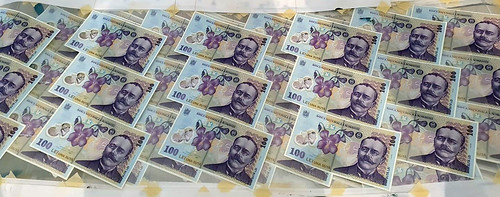
Romania apprehended a man law enforcement called the world's best forger of high-security plastic banknotes.
The operation was part of a crackdown on a criminal gang allegedly counterfeiting cash previously thought to be almost impossible to accurately reproduce. Replicas of Romania's one-hundred-lei bill were so good they earned the nickname Super Leu.
The evolution of this type of fake since 2014 has been spectacular," the organized-crime unit said Wednesday in a statement. The gang's leader managed to produce the best forgeries in Romania's history and become the best counterfeiter of plastic banknotes in the world.
The polymer bills, introduced in 1999, are a source of pride for Romania's central bank because of the difficulty in faking them and because their durability means they last longer. A plunge in forgeries has also been welcomed by the Bank of England since it began switching to polymer notes in 2016. The bills have also proved more useful amid the Covid-19 pandemic, being more hygienic and helping to stem the spread of the virus.
To read the complete article, see:
‘World's Best Forger' of Plastic Banknotes Nabbed in Romania
(https://www.bloomberg.com/news/articles/2020-06-24/-world-s-best-forger-of-plastic-banknotes-nabbed-in-romania)

AAS OPENS NEW BOOK CONSERVATION LAB SPACE
While cleaning and conservation of numismatic items is still a touchy subject, it has long been necessary and accepted in the world of books and archives. Bibliophiles should enjoy this report on the new conservation lab at the American Antiquarian Society in Worcester, MA. -Editor
When the architects asked us about our hopes and vision for the new lab space, my desires were simple: light, space, climate control, and updated equipment of course . . . and maybe a comfy ergonomic chair? Those architects delivered on every account! A perfect combination of functionality and aesthetic, the new conservation studio is a space designed for the modern age. Outfitted with five workstations, state-of-the-art specialized equipment, and a chemical treatments room, it is a streamlined and spacious facility that will accommodate more staff and interns than ever to help process, preserve, and make collection items safe and ready for use.

It was exciting to watch this complex project unfold, from the initial floor plans to its construction to finally moving in. Babette Gehnrich, our Chief Conservator, worked closely with Lis Cena of Sam Anderson Architects to create both a beautiful and functionally efficient space. It was the perfect collaboration, merging art and science–much like conservation!
As part of the renovation, a new climate-control system was installed to ensure the preservation of the Society's extraordinary collections, which date back to the seventeenth century. The expansion also created the opportunity to update new tools and to add new state of the art equipment. Now, we can now perform multiple functions (washing, drying, leather consolidation, making paste and solutions, cutting mats, custom designed enclosures, mold remediation, binding books . . . this list could go on forever) with safety, ease and efficiency. As great as this equipment is, however, the lab's most impressive elements are its space and its light.
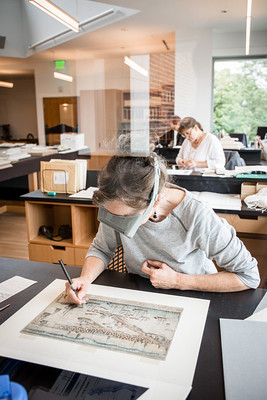 Our new conservation studio is filled with gorgeous light. A lofty cathedral skylight crowns the new space with extra height and natural northern light. We have an entire wall of windows next to our work stations, which we can modulate throughout the day as needed with light filtering shades and the latest in LED light technology overhead. I no longer require my humble task light to see what I'm doing. Having this generous and multi spectrum of light is ideal for the exacting conservation work we do, making subtle color matching and paper mending much easier. It's also a joy to be able to look up from my detail-oriented work and connect with what's happening in the outside world, whether that's storm clouds, the summer sun, or the first snowflakes of winter.
Our new conservation studio is filled with gorgeous light. A lofty cathedral skylight crowns the new space with extra height and natural northern light. We have an entire wall of windows next to our work stations, which we can modulate throughout the day as needed with light filtering shades and the latest in LED light technology overhead. I no longer require my humble task light to see what I'm doing. Having this generous and multi spectrum of light is ideal for the exacting conservation work we do, making subtle color matching and paper mending much easier. It's also a joy to be able to look up from my detail-oriented work and connect with what's happening in the outside world, whether that's storm clouds, the summer sun, or the first snowflakes of winter.
To read the complete article, see:
Above Us Only Sky: A Close Look at Light and Space in the AAS Conservation Lab
(https://pastispresent.org/2020/good-sources/above-us-only-sky-a-close-look-at-light-and-space-in-the-aas-conservation-lab/)
BOOKS IN AN AGE OF TWEETS
Here's an excerpt from a post by productivity and digital minimalism czar Cal Newport, beginning with a couple quotes from a professor's essay collection. -Editor
""They were not, with few exceptions, readers — never had been; that they had always occupied themselves with music, TV, and videos; they had difficulty slowing down enough to concentrate on prose of any density.""
"For in fact, our entire collective subjective history — the soul of our societal body, is encoded in print. Is encoded, and has for countless generations been passed along by way of the word, mainly through books."
... it was the introduction of mass-produced longform writing that really unleashed human potential — ushering in the modes of critical, analytical understanding that birthed both the enlightenment and the scientific revolution, the foundations of modernity. It allowed us to efficiently capture complex thought in all its nuance, then build on it, layer after layer, nudging forward human intellectual endeavor.
Writing was not just another technology, in other words, but the cognitive lodestone that attracted all advances that followed.
As it turns out, the essay collection was written in 1994, a generation ago. Every new technology has its doomsayers believing it's the ruination of mankind, and they're not entirely wrong. For every gain, something is lost. But books haven't gone away.
I had a conversation with my son where I asked him, "How long does it take to write a tweet?" - a few seconds. How long does it take to write a Facebook post? - a couple minutes. "A newspaper article?" - a day or two. "Magazine article?" A book?"
Books are the fruit of years or even a lifetime's effort. For those willing to spare just hours, that accumulated wisdom and advice is yours to be had. The great numisamtic authors of the past are still here with us today in their books. Read them in print or on some device, but read them and lifetimes of knowledge will be yours. -Editor
To read the complete article, see:
On the Exceptionalism of Books in an Age of Tweets
(https://www.calnewport.com/blog/2020/06/27/on-the-exceptionalism-of-books-in-an-age-of-tweets/)

CARNEGIE LIBRARY RARE BOOK THEFT SENTENCES
One more for the bibliophiles before returning to pure numismatics. Thanks to Larry Dziubek and Mike Marotta for passing along articles about the sentencing of the pair accused of stealing rare books for the Carnegie Library of Pittsburgh. -Editor
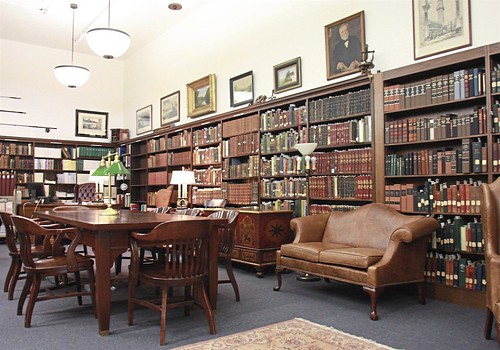
The day before Caliban Book Shop owner John Schulman stood before a Common Pleas judge and pleaded guilty to three counts involving the theft and destruction of rare and collectible books from the Carnegie Library of Pittsburgh, he sent an email to supporters declaring his innocence.
In the lengthy message sent on Jan. 12, obtained by the Pittsburgh Post-Gazette on Sunday, Mr. Schulman, 56, told the recipients that he was pleading guilty to receiving stolen property, theft by deception and forgery — but that "I am innocent of all of these."
He explained that the prosecution had offered him a "huge reduction" from the 20 original counts filed against him, and because of the "expense, time and risk of a trial" that his defense attorneys advised him to take the plea, calling it "in essence, a victory for our side."
Both Mr. Schulman and Gregory Priore, the former sole archivist and manager of the the library's rare book room at the Oakland branch pleaded guilty and will be sentenced by Judge Alexander P. Bicket on Thursday. The advisory guidelines suggest a sentence of nine to 16 months incarceration, and Deputy District Attorney Brian Catanzarite urged the judge to impose prison time since the theft scheme — in which Mr. Priore would remove whole items — or cut out maps and plates from collectible books to give to Mr. Schulman to sell — went on for 25 years and resulted in a loss of more than $8 million.
In his message, Mr. Schulman wrote that, in the days before his plea, there had been evidence discovered that was favorable to him.
He wrote that he had just learned that items that had been stolen but returned to the library had "withdrawn" stamps on them, which he said was "proof that those items were actually legitimately sold to me by the library."
Mr. Schulman did not mention in that email that investigators searching the Caliban warehouse in Wilkinsburg on Aug. 24, 2017, during the initial investigation into the stolen materials, found a Carnegie Library book stamp with the word "withdrawn" on it.
Michael Vinson, a rare book dealer and author in Santa Fe, N.M., who received Mr. Schulman's original email, wondered: If the books were legitimately sold to Mr. Schulman, why did he make the checks for them out to Mr. Priore?
"I have bought hundreds of thousands of books from libraries that were properly deaccessioned," Mr. Vinson said. "Every check I wrote was made out to the library."
To read the complete article, see:
‘I am innocent,' co-defendant in Carnegie Library theft tells supporters
(https://www.post-gazette.com/news/crime-courts/2020/06/15/John-Schulman-guilty-plea-Carnegie-Library-books/stories/202006150082)
Here's an article on their sentencing. The photo below shows librarian Greg Priore at the library in 1999. -Editor
 An Allegheny County judge on Friday ordered home confinement and significant periods of probation for two men accused of stealing more than $8.1 million worth of rare books and artifacts from the Carnegie Library of Pittsburgh.
An Allegheny County judge on Friday ordered home confinement and significant periods of probation for two men accused of stealing more than $8.1 million worth of rare books and artifacts from the Carnegie Library of Pittsburgh.
Common Pleas Judge Alexander P. Bicket said he would have sentenced former librarian Gregory Priore and John Schulman, owner of Caliban Book Shop in Oakland, to jail had it not been for the coronavirus pandemic.
Police charged the pair with pilfering books and other written material from the library over 25 years, describing it as the largest antique book art theft in the world, the judge said.
He told the pair they betrayed their professions, the library, their families and the citizens of Allegheny County, among others.
"You will have to live that for the rest of your lives," Bicket said. "Without a doubt, were it not for the pandemic the sentence for both of these defendants would be significantly more impactful."
Schulman, 56, of Pittsburgh's Squirrel Hill neighborhood, previously pleaded guilty to theft, receiving stolen property and forgery. Bicket ordered him to serve concurrent sentences amounting to four years of home confinement with electronic monitoring and 12 years of probation. He must pay $55,731 in restitution and cannot profit from any potential publication or film about the thefts, according to the judge.
Priore, 63, of Pittsburgh's Shadyside neighborhood, previously pleaded guilty to theft and receiving stolen property. The judge ordered him to serve concurrent terms amounting to three years of home confinement with electronic monitoring and 12 years of probation.
Priore, who worked more than 30 years for the library, was archivist and manager of the William R. Oliver Special Collections Room. Police charged him with stealing some of the library's rarest material — including a history book autographed by President Thomas Jefferson and a Bible dating to the 1600s — and selling it to Schulman, who in turn sold it to collectors.
The library discovered the missing items during a 2017 appraisal and fired Priore. The appraisal determined that about 320 items and 16 maps and images from books, atlases and folios were damaged.
Patrick Dowd, chairman of the library's board of trustees, described the losses as irrevocable.
"They (the books) were to be maintained," he said. "They were to be studied. They were to be cherished."
Instead, he added, they were "pillaged for personal gain."
Both Schulman and Priore on Thursday apologized to the City of Pittsburgh, its residents and the Carnegie Library of Pittsburgh.
"I'm ashamed of what I did to that room. I'm appalled by my actions," Priore said, adding that he loved the library. "I am deeply sorry for what I've done."
Larry Dziubek adds:
"The prosecutor has asked the judge to reconsider his sentence because he thinks it is too light, and compared it to similar thefts that had stronger jail sentences."
To read the complete article, see:
Men who stole rare books from Carnegie Library sentenced to home confinement
(https://triblive.com/local/pittsburgh-allegheny/men-who-stole-rare-books-from-carnegie-library-sentenced-to-home-confinement/)
Some other articles, see:
Sentencing for defendants in library theft case begins with apologies
(https://www.post-gazette.com/news/crime-courts/2020/06/18/Sentencing-for-defendants-in-library-theft-case-continues-Friday/stories/202006180174)
Carnegie Library recovers $6.75 million from insurer in theft (https://www.post-gazette.com/news/crime-courts/2020/06/14/Carnegie-Library-recovers-6-75-mililon-from-insurer-in-library-theft/stories/202006120088)
Sentencing for defendants in library theft case begins with apologies (https://www.post-gazette.com/news/crime-courts/2020/06/18/Sentencing-for-defendants-in-library-theft-case-continues-Friday/stories/202006180174)
Ex-librarian, bookseller avoid prison for theft of rare books and items worth millions (https://www.pennlive.com/news/2020/06/ex-librarian-bookseller-avoid-prison-for-theft-of-rare-books-and-items-worth-millions.html)
To read earlier E-Sylum articles, see:
CARNEGIE LIBRARY OF PITTSBURGH RARE BOOK THEFTS
(https://www.coinbooks.org/v21/esylum_v21n12a07.html)
CARNEGIE RARE BOOK THEFT HEARING SCHEDULED
(https://www.coinbooks.org/v21/esylum_v21n29a26.html)
CARNEGIE LIBRARY RARE BOOK THEFT DEVELOPMENTS
(https://www.coinbooks.org/v21/esylum_v21n26a24.html)
COIN INDUSTRY LETTERS SUPPORT TOM NOE
It's been a while since we've heard about Tom Noe, the coin dealer imprisoned for financial misdealings in Ohio. Here's an excerpt from this weekend's Toledo Blade article. I corrected the article's spelling of Steve Ivy's name. -Editor
 Letters to Gov. Mike DeWine urging him to grant clemency to Coingate central figure Tom Noe came with something that could help in any plan for the former Toledo area coin dealer to pay back the $12.7 million in taxpayer funding he still owes — job offers.
Letters to Gov. Mike DeWine urging him to grant clemency to Coingate central figure Tom Noe came with something that could help in any plan for the former Toledo area coin dealer to pay back the $12.7 million in taxpayer funding he still owes — job offers.
"As an industry leader, I ask you to enable Tom to return to our community where he would be warmly welcomed and in fact has offers of employment from major companies including my own 86-year-old firm, Kagin's, Inc.," wrote Donald H. Kagin, a California coin dealer and former vice president of the American Numismatic Association. He wrote to the governor twice last year on Noe's behalf.
"This action would result in a win-win-win outcome since Tom would be able to make financial restitution while contributing to the corporate world and our industry in general," he wrote in November.
On April 17, Mr. DeWine, a Republican, granted clemency to Noe, a former Lucas County Republican Party chairman. Noe walked out of prison more than six years early as part of a broader effort to reduce the population of Ohio prisons infected with coronavirus.
In the process the governor bucked the Ohio Parole Board, which had just voted for the fourth time — this time unanimously — that Noe not be released.
Noe, 65, had served nearly 12 years of an 18-year state sentence for stealing nearly $13 million from two rare coin investment funds totaling $50 million that he arranged and managed for the Ohio Bureau of Workers' Compensation, the state insurance fund for injured workers.
He had previously served nearly two years in federal prison for illegal funneling campaign contributions through conduits to the 2004 re-election campaign of then President George W. Bush.
Mr. DeWine received about 25 letters related to Noe during 2019 — the governor's first year in office, according to documents released in response to a public records request from The Blade.
All of the writers urged the governor to release Noe. The Blade has also requested related correspondence for this year.
Steve Ivy, chairman of Dallas-based Heritage Auctions, was among the letter writers to Mr. DeWine and his predecessor, Gov. John Kasich, to urge the release of his friend of nearly 40 years. He also testified on Noe's behalf at his 2018 clemency hearing.
He told The Blade that Heritage's interest in hiring Noe is sincere but has not gone beyond that.
"We have every intention of talking with Tom when this coronavirus mess is over," Mr. Ivy said.
"Most coin dealers I know feel the same way about Tom that I do despite his conviction in a court of law, and by the press," he wrote.
As a general rule, someone dealing in investment coins would not have to be bonded unless perhaps when dealing with high-dollar transactions, said Jimmy Hayes, executive director of the Industry Council for Tangible Assets. The Georgia-headquartered council is a national trade association for dealers in rare coins, currency, and precious metals. It bills itself as the "industry watchdog."
Mr. Hayes said coin dealers do not need bonding "any more than a diamond merchant would have to be bonded."
Although familiar with Noe, he was not among those who wrote to the governor and was unaware of Noe's release. He compared Noe's crime to a bank teller who lifts money from the cash drawer for what he thought was a sure bet on a stock with the full intention of putting the money back later.
"He didn't realize in his world that, no, just putting it back doesn't mean you can take it to start with," Mr. Hayes said. "But what would be respected would be his knowledge of numismatics. That would have value to a company."
To read the complete article, see:
Rare coin industry signals 'welcome back' to Tom Noe
(https://www.toledoblade.com/local/politics/2020/06/27/coingate-tom-noe-out-of-prison-job-offers/stories/20200522109)
To read earlier E-Sylum articles, see:
NOE CHARGED WITH 53 NEW COUNTS IN OHIO COIN SCANDAL
(https://www.coinbooks.org/esylum_v09n08a09.html)
COIN DEALER TOM NOE'S CONVICTION UPHELD
(https://www.coinbooks.org/esylum_v13n01a21.html)
NEW BOOK: COINGATE
(https://www.coinbooks.org/v20/esylum_v20n53a02.html)
LOOSE CHANGE: JUNE 28, 2020
Here are some additional items in the media this week that may be of interest. -Editor
Baldwin's Opening Refurbished Coin Room
Baldwin's of London announced the opening of their newly refurbished coin room. -Editor
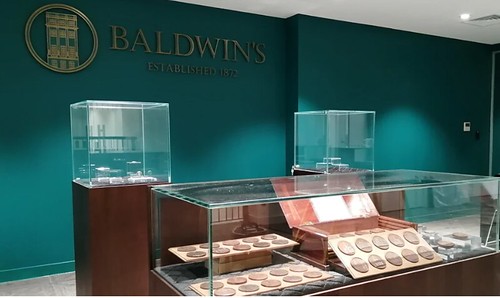
All of the team at Baldwin's continue to wish you and your family good health through these challenging times.
In recent months we have not only been working to continue to provide you with great levels of service and some of the most interesting selection of new coins but also getting our newly refurbished building at 399 Strand ready. We are very pleased to be able to announce that from Monday, June 29th we will be open to the public, featuring the Baldwin's Coin Room, and various displays of some of the world's most interesting coins and related items and artefacts.
We are also changing our opening hours in order to try and make it easier for people to come and visit us.
To read the complete article, see:
NOW OPENING WITH NEW HOURS
(https://www.baldwin.co.uk/news/baldwins-during-covid19/)
Gold Left on Swiss Train
Arthur Shippee passed along this BBC News item about a cache of gold left behind on a train in Switzerland. -Editor
While many of us have left something on a train - a phone, a wallet, headphones - it's highly unlikely you've wandered onto the platform leaving a bagful of gold behind.
Well, one person in Switzerland has. And the authorities would quite like to find them.
Efforts are being made to track down the owner of more than 3kg of gold that was left in a carriage last October.
The hoard, worth around £152,000 ($191,000), was found on a train between St Gallen and Lucerne.
To read the complete article, see:
Swiss search for owner of gold haul left on train
(https://www.bbc.com/news/world-europe-53041884)
Lucky Coin Hits Lottery Twice
Would you trade a rare coin for a REALLY lucky one? -Editor
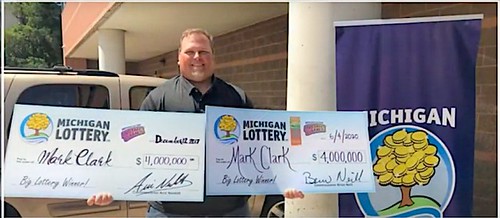
For the second time, a southeastern Michigan man has won a $4 million lottery game, officials said Monday.
Mark Clark of South Rockwood scratched a ticket with a coin that was given to him by his late father about 10 years ago. They often fished together after Clark won a different $4 million instant game in 2017.
"You don't think you'll win millions once, and you definitely never think it would happen twice," Clark, 50, said in a statement released by the Michigan Lottery. "It's hard to put into words exactly what I am feeling. ... I can't help but think maybe that lucky coin helped me win this."
To read the complete articles, see:
Michigan man wins $4M lottery scratch card game, again
(https://apnews.com/1d642272ac5193c54d4fbb06687662b2)
Man uses a lucky coin to win $4-million from scratch ticket -- not once, but twice
(https://boingboing.net/2020/06/23/man-uses-a-lucky-coin-to-win.html)
FEATURED WEB SITE: COINS OF PANAMA
This week's Featured Web Site is Coins-of-Panama.com.Welcome to Coins-of-Panama.com. This is a catalog or reference guide of Panama coins, tokens, medals and other numismatic items from or associated with the Republic of Panama or the Panama Canal Zone.
Panama has a fascinating history which includes a visit from Christopher Columbus, Spanish Conquistadores, discovery of the Pacific Ocean, attacks by the pirates and privateers including Sir Francis Drake and Sir Henry Morgan (who burned down the City of Panama), attacks from the British navy including Admiral Vernon, transit route for the 49er's (gold rush) going to California, the first transcontinental railroad, the failed attempt to build the Panama Canal by the French, revolutions, independence, the successful building of the Panama Canal by the Americans, military dictators, Panama Canal treaties, Operation Just Cause, etc. Many of these events are reflected in coins, tokens and medals.
Numismatic items covered on this web site include finca and merchant tokens, military tokens from the Canal Zone, Palo Seco Leper Colony, challenge coins, Admiral Vernon medals, military chits, wooden nickels and more.

www.coins-of-panama.com

